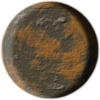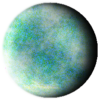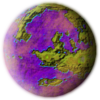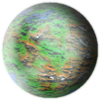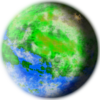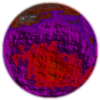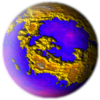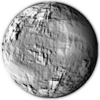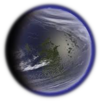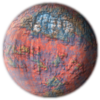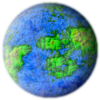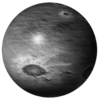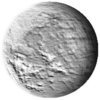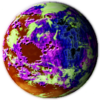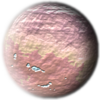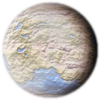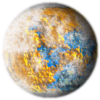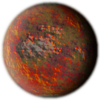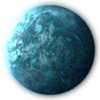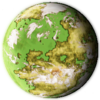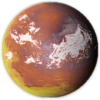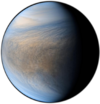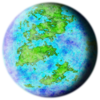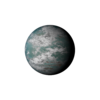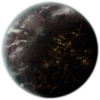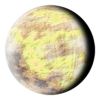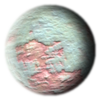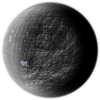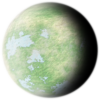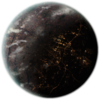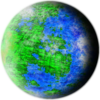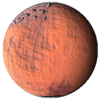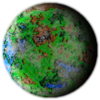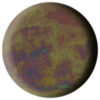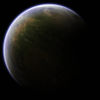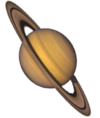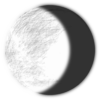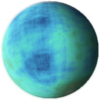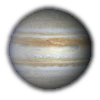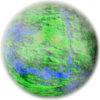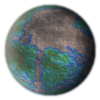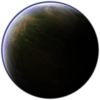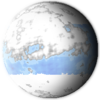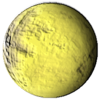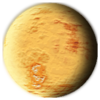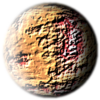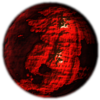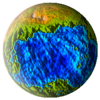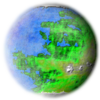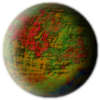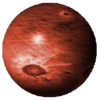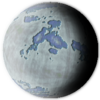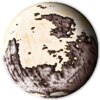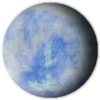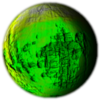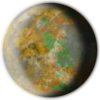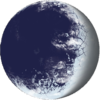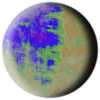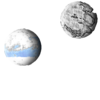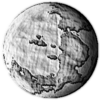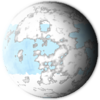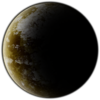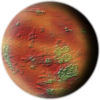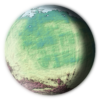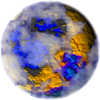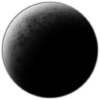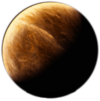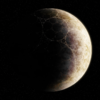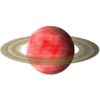Content to be Developed
| BattleName
|
40k Date
|
Iterator Sectors
|
Cultist Sectors
|
Battle Summary
|
| Abgrund Delta I
|
|
Physics
Type Standard iron/silicate
Mass 3.7 x 943 kg
Density 9.91 g/cm3
Composition 34.9% iron, 25.5% oxygen, 22.1% aluminum, 12.2% silicon, 5.4% other metals, trace other elements
Gravimetry
Gravity 19.7 m/s2
Escape Velocity 23.3 km/s
Rotation Period 11.7 hours
Axis Tilt 7.4 °
Atmosphere
Type Standard reducing
Pressure 140.93 kPa
Composition Unknown
|
|
| Abgrund Delta II
|
|
Physics
Type Arctic world, core unknown
Mass 4.16 x 1,423 kg
Density Unknown
Composition Only known composition is fresh H20, core sample unavailable
Gravimetry
Gravity 1.14G
Escape Velocity 11.3 km/s
Rotation Period 31.8 hours
Axis Tilt 1.7 °
Atmosphere
Type Thin Breathable
Pressure 68.98 kPa
Composition 80.6% nitrogen, 19.4% oxygen, trace other gases
|
|
| Abgrund Delta III & IV
|
|
|
|
| Abgrund Delta V
|
|
Physics
Type Standard ocean
Mass 5.09 x 1024 kg
Density 5.36 g/cm3
Composition 36.0% iron, 28.5% oxygen, 22.2% Nitrogen, 10.2% nickel, 3.2% other metals, trace other element
Gravimetry
Gravity 9.10 m/s2
Escape Velocity 10.53 km/s
Period 20.62 hours
Axis Tilt 20.34 °
Atmosphere
Type Thin breathable
Pressure 56.46 kPa
Composition 40.8% argon, 39.9% carbon dioxide, 19.2% nitrogen, trace other gases
|
|
| Aethos
|
|
|
|
| Agif Prime
|
|
|
|
| Akawaio
|
|
Physics
Type Standard iron/silicate
Density 7.80 g/cm3
Composition 37.1% iron, 19.4% magnesium, 19.6% oxygen, 10.7% silicon, 7.6% other metals, trace other elements
Gravimetry
Gravity 8.1 m/s2
Escape Velocity 9.09 km/s
Rotation Period 34.3 hours
Axis Tilt 20.9 °
Atmosphere
Type Dense Breathable
Pressure 141.9 kPa
Composition 73.5% Nitrogen, 26.5% Oxygen, trace other gases
|
|
| Alentos Hope
|
|
|
|
| Alkoss Primus
|
|
Physics
Type Large iron/silicate
Mass 6.14 x 1038 kg
Density 5.44 g/cm3
Composition 30.1% oxygen, 20.9% iron, 19.2% silicon, 18.8% calcium, 3.5% magnesium, 3.2% other metals, 4.3% other elements
|
Gravimetry
Gravity 1.83 m/s2
Escape Velocity 3.47 km/s
Rotation Period 29.4 hours
Axis Tilt 0.13 °
|
Atmosphere
Type Slight Toxic Breathable
Pressure 401.47 kPa
Composition 75.8% Nitrogen, 24.2% Oxygen, trace other gases
|
|
|
| Alkoss Secundus
|
|
Physics
Type Large iron/silicate
Mass 7.38 x 1711 kg
Density 8.08 g/cm3
Composition 29.4% iron, 21.8% silicon, 21.5% oxygen, 18.6% nickel, 8.7% other metals, trace other elements
|
Gravimetry
Gravity 14.16 m/s2
Escape Velocity 15.88 km/s
Rotation Period 17.15 hours
Axis Tilt 2.79 °
|
Atmosphere
None
|
|
|
| Alkoss Tertius
|
|
Physics
Type Large iron/silicate
Mass 2.88 x 1025 kg
Density 5.35 g/cm3
Composition 49.0% iron, 32.0% oxygen, 19.0% silicon, trace other elements
|
Gravimetry
Gravity 16.19 m/s2
Escape Velocity 18.76 km/s
Rotation Period 32.40 hours
Axis Tilt 7.92 °
|
Atmosphere
Type Thin Breathable
Pressure 45.12 kPa
Composition 79.2% argon, 20.8% oxygen, trace other gases
|
|
|
| Alseid
|
|
|
|
| Amara
|
|
Physics
Type Small iron/silicate
Mass 7.32 x 1823 kg
Density 8.94 g/cm3
Composition 50.9% iron, 19.2% silicon, 18.8% calcium, 3.5% magnesium, 3.2% other metals, 4.4% other elements
|
Gravimetry
Gravity 4.70 m/s2
Escape Velocity 7.81 km/s
Rotation Period 13.4 hours
Axis Tilt 40.81 °
|
Atmosphere
Type Slight Toxic Breathable
Pressure 775.64 kPa
Composition 77.1% Nitrogen, 20.9% Oxygen, trace other gases
|
|
|-
|Amiri
|
|
Physics
Type Medium iron/silicate
Mass 5.98 x 923 kg
Density 4.17 g/cm3
Composition 30.1% oxygen, 20.9% iron, 19.2% silicon, 18.8% calcium, 3.5% magnesium, 3.2% other metals, 4.3% other elements
|
Gravimetry
Gravity 1.04 m/s2
Escape Velocity 2.89 km/s
Rotation Period 28.37 hours
Axis Tilt 30.24 °
|
Atmosphere
Type Standard Breathable
Pressure 1172.87 kPa
Composition 75.8% Nitrogen, 24.2% Oxygen, trace other gases
|
|
|-
|Antroth
|
|
Despite possessing active factories and mines, Antroth mainly serves as a residential planet for Prosperine's bourgeoisie and even aristocrats and nobles from the rest of the Beneheventian Sub-sector, too low to reside on Porilia with the ruling nobility and too high to reside on an Hive World such as Mardrion.
The cities of this planet are an example of Imperial gothic architecture at its finest, and its factories produce luxury products on costant demand through all of the Sub-sector and beyond.
Outside of those cities are enclosed spaces of megalitic proportions, owned and used as villas by Porilia's high nobles: these places are both private factories where never ending hosts of slaves work without respite and places of vacation used to take a break from the capital's convoluted politics.
|
|-
|Arcadis
|
|
Physics
Type Large iron/silicate
Mass 3.92 x 1025 kg
Density 5.52 g/cm3
Composition 41.3% iron, 30.1% oxygen, 13.1% silicon, 10.5% aluminum, 2.8% sodium, 0.8% other metals, 1.4% other elements
Gravimetry
Gravity 12.33 m/s2
Escape Velocity 20.91 km/s
Rotation Period 30.07 hours
Axis Tilt 1.02 °
Atmosphere
Type Dense corrosive
Pressure 204.77 kPa
Composition 44.2% ammonia, 29.2% argon, 16.4% sulfur dioxide, 10.2% methane, trace other gases
Belacane has a thin, unbreathable atmosphere which offers little protection from the "season of iron," a hail of asteroids that bombards the planet once every year.
Satellites
No natural moons, but the planet maintains a vast starship repair complex in low orbit, together with a series of defensive weapons platforms.
|
|-
|Argentis Ullum
|
|
Physics
Type Large iron/silicate
Mass 2.36 x 1025 kg
Density 5.59 g/cm3
Composition 34.2% iron, 26.8% oxygen, 19.4% silicon, 19.1% aluminum, 0.5% other metals, trace other elements
Gravimetry
Gravity 15.58 m/s2
Escape Velocity 17.68 km/s
Rotation Period 16.48 hours
Axis Tilt 39.38 °
Atmosphere
Type Dense breathable
Pressure 252.85 kPa
Composition 76.2% nitrogen, 23.8% oxygen, trace other gases
|
|-
|Ark'alask Septimus
|
|
Ark'alask-Septimus is the seventh and last of Ark'alask's major ellipsoidal moons, although the gas giant is known to have more than two hundred moonlets of various small sizes in its orbit. It is a barren, rocky planetoid, with a thin atmosphere generally toxic to unaugmented humans. It is the furthest major body from the system's core, which is why it was chosen as the site of a Crusade armoury facility - ships could quickly translate out of the Warp, take in supplies, and be on their way without having to needlessly congest the busy Harkarialis-Primaris naval yard further in-system.
The moon's surface is a jagged jigsaw of mountain ranges and deep canyons, a testament to a more tumultuous age when it's core still burned. Now it is a dead world, although the infernal magma storms from the gas giant below keeps Ark'alask-Septimus warm enough to sustain life. This forbidding landscape is dominated by the eleven kilometer high peak of Karadon Indomitus. It is under this colossal mountain that the Imperium built its armoury.
Physics
Type Small iron/silicate
Mass 5.62 x 1024 kg
Density 5.83 g/cm3
Composition 45.6% iron, 28.8% oxygen, 11.3% titanium, 8.8% silicon, 2.0% other metals, 3.5% other elements
|
Gravimetry
Gravity 9.94 m/s2
Escape Velocity 11.04 km/s
Period 39.46 hours
Axis Tilt 6.35 °
|
Atmosphere
Type Thin toxic
Pressure 41.25 kPa
Composition 57.9% carbon dioxide, 22.0% sulfur dioxide, 20.1% oxygen, trace other gases
|
|
|-
|Armoury Pandora
|
|
|
|-
|Bakayri
|
|
Physics
Type Standard iron/silicate
Density 8.20 g/cm3
Composition 31.1% iron, 28.0% magnesium, 18.6% oxygen, 14.7% silicon, 7.6% other metals, trace other elements
Gravimetry
Gravity 10.42 m/s2
Escape Velocity 11.89 km/s
Rotation Period 34.8 hours
Axis Tilt 20.6 °
Atmosphere
Type Standard Breathable
Pressure 81.44 kPa
Composition 68.5% nitrogen, 28.5% oxygen, trace other gases
|
|-
|Barbadua
|
|
|
|-
|Bas-Tyranis
|
|
|
|-
|Baylon
|
|
|
|-
|Bellergund Vincula
|
|
Physics
Type Large iron/silicate
Density 5.72 g/cm3
Composition 34.4% nickel, 21.9% iron, 21.2% oxygen, 21.1% silicon, 0.2% other metals, 1.1% other elements
Gravimetry
Gravity 12.67 m/s2
Escape Velocity 14.21 km/s
Rotation Period 19.58 hours
Axis Tilt 4.27 °
Atmosphere
Type Superdense toxic
Pressure 5.05 MPa
Composition 79.4% carbon dioxide, 20.6% oxygen, trace other gases
|
|-
|Belthor
|
|
Physics
Type Large iron/silicate
Mass 2.50 x 1025 kg
Density 5.75 g/cm3
Composition 33.2% iron, 22.0% silicon, 21.4% magnesium, 20.7% oxygen, 2.6% other metals, trace other elements
Gravimetry
Gravity 7.81 m/s2 - 16.19 m/s2 (Fluctuates)
Escape Velocity 18.11 km/s
Rotation Period 13.03 hours
Axis Tilt 24.21 °
Atmosphere
Type Dense toxic
Pressure 183.52 kPa
Composition 84.5% carbon dioxide, 15.5% oxygen, trace other gases
|
|-
|Betalis I
|
|
Physics
Type Standard iron/silicate
Mass 1.09 x 1025 kg
Density 5.90 g/cm3
Composition 34.1% iron, 27.5% oxygen, 22.4% aluminum, 12.2% silicon, 3.8% other metals, trace other elements
Gravimetry
Gravity 12.49 m/s2
Escape Velocity 13.79 km/s
Rotation Period 27.31 hours
Axis Tilt 3.13 °
Atmosphere
Type Dense breathable
Pressure 139.10 kPa
Composition 80.5% nitrogen, 19.5% oxygen, trace other gases
|
|-
|Betalis II
|
|
Physics
Type Standard iron/silicate
Mass 3.64 x 1024 kg
Density 5.55 g/cm3
Composition 34.6% iron, 29.1% oxygen, 17.7% silicon, 13.8% nickel, 4.7% other metals, trace other elements
Gravimetry
Gravity 8.33 m/s2
Escape Velocity 9.48 km/s
Rotation Period 20.58 hours
Axis Tilt 40.74 °
Atmosphere
Type Dense toxic
Pressure 126.84 kPa
Composition 70.1% nitrogen, 29.9% sulfur dioxide, trace other gases
|
|-
|Betalis III
|
|
Physics
Type Standard iron/silicate
Mass 9.37 x 1024 kg
Density 5.67 g/cm3
Composition 31.8% iron, 31.7% oxygen, 12.7% silicon, 12.7% aluminum, 11.1% other metals, trace other elements
Gravimetry
Gravity 11.57 m/s2
Escape Velocity 13.03 km/s
Rotation Period 13.52 hours
Axis Tilt 7.63 °
Atmosphere
Type Standard breathable
Pressure 90.48 kPa
Composition 77.1% nitrogen, 22.9% oxygen, trace other gases
|
|-
|Betalis IV
|
|
Physics
Type Large iron/silicate
Mass 1.68 x 1025 kg
Density 4.88 g/cm3
Composition 32.3% silicon, 30.4% iron, 28.6% oxygen, 4.8% titanium, 3.9% other metals, trace other elements
Gravimetry
Gravity 12.70 m/s2
Escape Velocity 15.42 km/s
Rotation Period 14.03 hours
Axis Tilt 17.84 °
Atmosphere
Type Thin toxic
Pressure 27.93 kPa
Composition 54.3% carbon dioxide, 23.7% argon, 22.0% sulfur dioxide, trace other gases
|
|-
|Beyaan
|
|
Physics
Type Standard ocean
Mass 3.01 x 924 kg
Density 4.89 g/cm3
Composition 30.3% oxygen, 29.2% iron, 22.1% silicon, 15.5% aluminum, 0.9% other metals, trace other elements
Gravimetry
Gravity 7.06 m/s2
Escape Velocity 8.38 km/s
Rotation Period 48.93 hours
Axis Tilt 9.91 °
Atmosphere
Type Standard breathable
Pressure 186.08 kPa
Composition 80.1% argon, 19.9% oxygen, trace other gases
Although not always so, Beyaan has in recent millenia become largely an ocean world with the majority of the population retreating onto the remaining islands scattered across the planets watery surface. As the natural flooding occured, the newly reclaimed land became areas of rich aquatic life both plant and animal.
|
|-
|Bharteth
|
|
Physics
Type Standard iron/silicate
Mass 4.94 x 1327 kg
Density 5.19 g/cm3
Composition 34.9% iron, 25.5% oxygen, 22.1% aluminum, 12.2% silicon, 5.4% other metals, trace other elements
Gravimetry
Gravity 10.17 m/s2
Escape Velocity 11.13 km/s
Rotation Period 27.74 hours
Axis Tilt 3.42 °
Atmosphere
Type Thin Toxic
Pressure 118.98 kPa
Composition 80.6% nitrogen, 19.4% oxygen, trace other gases
|
|-
|Blaant
|
|
Physics
Type Small iron/silicate
Mass 7.32 x 1823 kg
Density 8.94 g/cm3
Composition 50.9% iron, 19.2% silicon, 18.8% calcium, 3.5% magnesium, 3.2% other metals, 4.4% other elements
|style="width: 33%;"|
Gravimetry
Gravity 4.70 m/s2
Escape Velocity 7.81 km/s
Rotation Period 13.4 hours
Axis Tilt 40.81 °
|style="width: 33%;"|
Atmosphere
Type Slight Toxic Breathable
Pressure 775.64 kPa
Composition 77.1% Nitrogen, 20.9% Oxygen, trace other gases
|}
|
|-
|Caedes Primus
|
|
|
|-
|Cambrius
|
|
Physics
Type Standard iron/silicate
Mass 4.83 x 1024 kg
Density 6.08 g/cm3
Composition 27.1% oxygen, 26.8% iron, 19.6% magnesium, 8.7% silicon, 17.8% other metals, trace other elements
Gravimetry
Gravity 9.72 m/s2
Escape Velocity 10.57 km/s
Rotation Period 20.19 hours
Axis Tilt 20.60 °
Atmosphere
Type Thin Breathable
Pressure 79.81 kPa
Composition 76.6% Carbon dioxide, 23.4% oxygen, trace other gases
|
|-
|Cambrius Minor
|
|
Physics
Type Small iron/silicate
Mass 5.78 x 1023 kg
Density 4.71 g/cm3
Composition 37.1% oxygen, 30.9% iron, 13.2% silicon, 9.6% calcium, 3.5% magnesium, 1.3% other metals, 4.3% other elements
Gravimetry
Gravity 4.04 m/s2
Escape Velocity 4.99 km/s
Rotation Period 12.93 hours
Axis Tilt 36.26 °
Atmosphere
Type Dense reducing
Pressure 772.87 kPa
Composition 75.8% sulfur dioxide, 24.2% methane, trace other gases
|
|-
|Canley
|
|
Physics
Type Standard ocean
Density 5.30 g/cm3
Composition 29.6% oxygen, 22.6% iron, 19.5% aluminum, 15.8% silicon, 3.6% calcium, 5.9% other metals, 3.0% other elements
Gravimetry
Gravity 8.29 m/s2
Escape Velocity 9.65 km/s
Rotation Period 25.13 hours
Axis Tilt 7.65 °
Atmosphere
Type Standard breathable
Pressure 92.69 kPa
Composition 75.1% nitrogen, 24.9% oxygen, trace other gases
|
|-
|Carmine
|
|
|
|-
|Cassian
|
|
|
|-
|Castelor
|
|
Unknown due to extreme planetary anomalies
|
|-
|Cebrion
|
|
Physics
Type Small iron/silicate
Density 5.48 g/cm3
Composition 47.0% iron, 32.5% oxygen, 16.0% silicon, 4.4% magnesium, 0.2% other metals, trace other elements
Gravimetry
Gravity 7.74 m/s2
Escape Velocity 8.87 km/s
Rotation Period 30.29 hours
Axis Tilt 26.58 °
Atmosphere
None
|
|-
|Celyne
|
|
|
|-
|Cerberus
|
|
Physics
Type Large iron/silicate
Mass 3.92 x 1025 kg
Density 5.52 g/cm3
Composition 41.3% iron, 30.1% oxygen, 13.1% silicon, 10.5% aluminum, 2.8% sodium, 0.8% other metals, 1.4% other elements
Gravimetry
Gravity 18.33 m/s2
Escape Velocity 20.91 km/s
Rotation Period 26.57 hours
Axis Tilt 1.07 °
Atmosphere
Type Dense corrosive
Pressure 204.77 kPa
Composition 44.2% ammonia, 29.2% argon, 16.4% sulfur dioxide, 10.2% methane, trace other gases
Cerberus is an inhospitable planet; a thin atmosphere, high gravity and multiple toxins as a result of the vast quantities of minerals and ores lacing their way through the planets structure. However it was the latter, which drew the attention of the Tech Priests. Radiation, Toxic atmospheres and little to no vegetation is no deterrent to the Mechanicum when there is a plentiful source of valuable material at hand.
|
|-
|Cerulea Harbor
|
|
|
|-
|Childriss B
|
|
|
|-
|Cicatrice
|
|
Physics
Type Large iron/silicate
Density 5.99 g/cm3
Composition 43.2% iron, 20.6% silicon, 17.1% oxygen, 12.0% nickel, 7.1% other metals, trace other elements
Gravimetry
Gravity 12.87 m/s2
Escape Velocity 14.10 km/s
Rotation Period 28.20 hours
Axis Tilt 18.72 °
Atmosphere
Type Dense breathable
Pressure 191.11 kPa
Composition 54.1% nitrogen, 25.9% argon, 20.1% oxygen, trace other gases
|
|-
|Cipaar
|
|
|
|-
|Cold Kay
|
|
|
|-
|Convérse Fuéritis
|
|
Physics
Type Large iron/metallic
Mass 1.63 x 1204 kg
Density 7.81 g/cm3
Composition 29.5% iron, 24.2% titanium, 23.6% oxygen, 6.2% silicon, 16.5% other metals, trace other elements
Gravimetry
Gravity 7.52 m/s2
Escape Velocity 7.98 km/s
Rotation Period 25.47 hours
Axis Tilt 6.08 °
Atmosphere
Type Thin toxic
Pressure 68.55 kPa
Composition 37.1% Argon, 24.6% Oxygen, 24.5% Sulfur Dioxide, 13.8% Carbon Dioxide, trace other gases
|
|-
|Corabie
|
|
Physics
Type Standard iron/silicate
Mass 4.04 x 1024 kg
Density 5.99 g/cm3
Composition 34.9% iron, 25.5% oxygen, 22.1% aluminum, 12.2% silicon, 5.4% other metals, trace other elements
Gravimetry
Gravity 9.07 m/s2
Escape Velocity 9.93 km/s
Rotation Period 19.47 hours
Axis Tilt 2.14 °
Atmosphere
Type Standard reducing
Pressure 114.39 kPa
Composition 75.7% argon, 24.3% hydrogen, trace other gases
The topography of Corabie consists mostly of flat deserts broken by ranges of rocky hills and low mountains. Vegetation is sparse, small hardy shrubs and ground cover for the most part.
Most of the planets water is in underground rivers and aquifers. A handful of oasis across the planet mark the few places where it reaches the surface.
Because of the lack of surface water there is almost no native wildlife.
|
|-
|Corris
|
|
|
|-
|Crides
|
|
|
|-
|Cyrtix Inanis
|
|
Physics
Type Small Obsidian like material
Mass 9.66 x 1023 kg
Density 4.76 g/cm3
Composition Unknown
Gravimetry
Unknown
Atmosphere
Unknown
|
|-
|Cytrix Prime
|
|
Physics
Type Standard iron/silicate
Mass 1.89 x 1150 kg
Density 7.73 g/cm3
Composition 39.5% oxygen, 37.9% iron, 17.5% silicon, 3.1% calcium, 0.9% other metals, 1.0% other elements
Gravimetry
Gravity 11.31 m/s2
Escape Velocity 12.68 km/s
Rotation Period 17.4 hours
Axis Tilt 97.12 °
Atmosphere
Type Thin toxic
Pressure 54.85 kPa
Composition 75.5% carbon dioxide, 24.5% oxygen, trace other gases
|
|-
|Cytrix Secundarium
|
|
Physics
Type Standard iron/silicate
Mass 1.14 x 1025 kg
Density 6.27 g/cm3
Composition 40.8% magnesium, 25.4% iron, 14.1% oxygen, 13.5% silicon, 2.2% calcium, 2.0% other metals, 2.1% other elements
Gravimetry
Gravity 13.23 m/s2
Escape Velocity 14.16 km/s
Rotation Period 23.17 hours
Axis Tilt 57.77 °
Atmosphere
Type Standard reducing
Pressure 129.3 kPa
Composition 46.1% nitrogen, 29.1% argon, 24.7% oxygen, trace other gases
|
|-
|Dagger
|
|
Physics
Type Large iron/silicate
Mass 1.48 x 1032 kg
Density 3.89 g/cm3
Composition 32.3% silicon, 30.4% iron, 28.6% oxygen, 4.8% titanium, 3.9% other metals, trace other elements
|style="width: 33%;"|
Gravimetry
Gravity 11.40 m/s2
Escape Velocity 12.28 km/s
Rotation Period 34.3 hours
Axis Tilt 27.4 °
|style="width: 33%;"|
Atmosphere
Type Thin toxic
Pressure 37.38 kPa
Composition 54.3% carbon dioxide, 23.7% argon, 22.0% sulfur dioxide, trace other gases
|}
|
|-
|Danathu
|
|
|
|-
|Dathga
|
|
Physics
Type Large iron/metallic
Mass 1.63 x 1204 kg
Density 7.81 g/cm3
Composition 29.5% iron, 24.2% titanium, 23.6% oxygen, 6.2% silicon, 16.5% other metals, trace other elements
Gravimetry
Gravity 7.52 m/s2
Escape Velocity 7.98 km/s
Rotation Period 25.47 hours
Axis Tilt 6.08 °
Atmosphere
Type Thin toxic
Pressure 68.55 kPa
Composition 37.1% Argon, 24.6% Oxygen, 24.5% Sulfur Dioxide, 13.8% Carbon Dioxide, trace other gases
|
|-
|Demiurgus Secundus
|
|
|
|-
|Demiurgus Tertius
|
|
|
|-
|Donner
|
|
Physics
Type Standard iron/silicate
Mass 5.42 x 1024 kg
Density 5.34 g/cm3
Composition 45.4% iron, 25.8% oxygen, 15.7% silicon, 7.7% carbon, 3.3% other metals, 2.1% other elements
Gravimetry
Gravity 9.26 m/s2
Escape Velocity 10.75 km/s
Rotation Period 19.32 hours
Axis Tilt 3.55 °
Atmosphere
Type Thin breathable
Pressure 66.44 kPa
Composition 86.7% argon, 13.3% oxygen, trace other gases
|
|-
|Drak-Moor
|
|
|
|-
|Draonides
|
|
|
|-
|Drugell
|
|
|
|-
|Dudael
|
|
|
|-
|Dur-Kazit
|
|
|
|-
|Echorix
|
|
Physics
Type Standard iron/silicate
Mass 7.83 x 1824 kg
Density 14.84 g/cm3
Composition 27.1% oxygen, 26.8% iron, 19.6% magnesium, 8.7% silicon, 17.8% other metals, trace other elements
Gravimetry
Gravity 8.72 m/s2
Escape Velocity 11.78 km/s
Rotation Period 27.34 hours
Axis Tilt 34.17 °
Atmosphere
Type Thin Breathable
Pressure 89.48 kPa
Composition 76.6% Carbon dioxide, 23.4% oxygen, trace other gases
|
|-
|Eglurn
|
|
|
|-
|Eglurn Outpost
|
|
|
|-
|Empusa
|
|
A deadly jungle planet colonized only to exploit its rich mineral resources.
Physics
Type Large iron/silicate
Mass 2.50 x 1025 kg
Density 5.75 g/cm3
Composition 33.2% iron, 22.0% silicon, 21.4% magnesium, 20.7% oxygen, 2.6% other metals, trace other elements - mineral resources classed as Beta-plus, including adamantite and jethryk
Gravimetry
Gravity 12.19 m/s2
Escape Velocity 18.11 km/s
Rotation Period 9.03 hours
Axis Tilt 9.21 °
Atmosphere
Type Dense toxic
Pressure 183.52 kPa
Composition 50% nitrogen, 20% argon, 15.5% oxygen, 14.5% carbon dioxide, trace other gases - biochemical hazards very high
|
|-
|Eplis
|
|
Physics
Type Standard iron/silicate
Mass 3.64 x 1024 kg
Density 5.55 g/cm3
Composition 34.6% iron, 29.1% oxygen, 17.7% silicon, 13.8% nickel, 4.7% other metals, trace other elements
|
Gravimetry
Gravity 8.33 m/s2
Escape Velocity 9.48 km/s
Rotation Period 20.58 hours
Axis Tilt 40.74 °
|
Atmosphere
Type Dense toxic
Pressure 126.84 kPa
Composition 70.1% nitrogen, 29.9% sulfur dioxide, trace other gases
|
|
|-
|Extarious
|
|
|
|-
|Faroe
|
|
|
|-
|Fearis
|
|
Physics
Type Large iron/silicate
Mass 2.04 x 1025 kg
Density 4.55 g/cm3
Composition 25.0% oxygen, 24.9% iron, 20.6% silicon, 13.4% sodium, 6.5% aluminum, 0.8% other metals, 8.8% other elements
Gravimetry
Gravity 12.96 m/s2
Escape Velocity 16.28 km/s
Rotation Period 28.77 hours
Axis Tilt 9.53 °
Atmosphere
Type Thin toxic
Pressure 56.30 kPa
Composition 47.5% sulfur dioxide, 36.6% argon, 15.8% oxygen, trace other gases
Although far enough away from the Systems sun to retain an atmosphere, Fearis is far from hospitable. More than half the surface is covered in molten lakes and thermal upvents from the planets core and the atmosphere itself is a cocktail of corrosive and poisonous gases.
|
|-
|Finias
|
|
|
|-
|Fomoriar
|
|
|
|-
|Fort Bellgarde
|
|
|
|-
|Fortius Prime
|
|
Physics
Type Large iron/silicate
Density 5.64 g/cm3
Composition 42.7% iron, 25.4% oxygen, 19.5% silicon, 9.8% magnesium, 2.6% other metals, trace other elements
Gravimetry
Gravity 14.29 m/s2
Escape Velocity 16.13 km/s
Rotation Period 48.30 hours
Axis Tilt 4.55 °
Atmosphere
Type Standard breathable
Pressure 94.97 kPa
Composition 75.7% nitrogen, 21.0% oxygen, 2.1% carbon dioxide, 1.2% sulfur dioxide, trace other gases
The next planet is Fortius Prime. The capital world of the system is a classic "goldilocks" zone world of oceans and grassy plains. The major geological feature is the Great Equatorial Range, a massive mountain range that divides the pangean continent into North and South. This marks the divide of where the two previously smaller continents smashed into each other millions of years ago.
|
|-
|Fuschal
|
|
Physics
Type Water-rich iron/silicate
Mass 6.53 x 1023 kg
Density 5.01 g/cm3
Composition 34.2% iron, 26.4% oxygen, 17.1% silicon, 11.4% sodium, 4.0% magnesium, 3.6% other metals, 3.2% other elements
Gravimetry
Gravity 10.38 m/s2
Escape Velocity 12.25 km/s
Rotation Period 26.19 hours
Axis Tilt 22.06 °
Atmosphere
Type Terra-standard
Pressure 131.74 kPa
Composition 54.0% argon, 27.5% nitrogen, 17.8% oxygen, 0.6% carbon dioxide, trace other gases
A fecund water-world with densely populated islands, fiercely volcanic micro-continents, and numerous floating city-ships.
|
|-
|Gaul
|
|
|
|-
|Gazovar
|
|
Physics
Type Gas Giant
Density 2.25 g/cm3
Composition 40.1% Hydrogen, 39.5% Hellium, 13.6% Oxygen, 6.4% Argon, 0.4% other trace gases
Gravimetry
Gravity 1.72 m/s2
Escape Velocity 2.02 km/s
Rotation Period 13.06 hours
Axis Tilt 30.20 °
Atmosphere
Type Thin toxic
Pressure 15.68 kPa
Composition 40.1% Hydrogen, 39.5% Hellium, 13.6% Oxygen, 6.4% Argon, 0.4% other trace gases
The Third planet is the Hydrogen and Helium giant Gazovar. The violent storms on this planet and its incredibly strong magnetic field make it a dangerous world. It has a system of 6 moons, but they are airless rocks, possibly captured during system's formation.
|
Extension:DynamicPageList (DPL), version 2.3.0 : Warning: No results.
|-
|Ghoststar II
|
|
Physics
Type Standard iron/silicate
Density 6.20 g/cm3
Composition 31.1% iron, 28.0% magnesium, 18.6% oxygen, 14.7% silicon, 7.6% other metals, trace other elements
Gravimetry
Gravity 10.12 m/s2
Escape Velocity 10.89 km/s
Rotation Period 44.55 hours
Axis Tilt 27.59 °
Atmosphere
Type Dense toxic
Pressure 161.88 kPa
Composition 73.5% carbon dioxide, 26.5% sulfur dioxide, 0.0% nitrogen, trace other gases
|
|-
|Ghoststar III
|
|
Physics
Type Standard iron/silicate
Mass 5.42 x 1024 kg
Density 5.34 g/cm3
Composition 45.4% iron, 25.8% oxygen, 15.7% silicon, 7.7% carbon, 3.3% other metals, 2.1% other elements
Gravimetry
Gravity 9.26 m/s2
Escape Velocity 10.75 km/s
Rotation Period 19.32 hours
Axis Tilt 3.55 °
Atmosphere
Type Thin breathable
Pressure 66.44 kPa
Composition 86.7% argon, 13.3% oxygen, trace other gases
A lush planet with ideal growing conditions and little manufacturing or mining potential.
|
|-
|Ghoststar V
|
|
Physics
Type Large iron/silicate
Mass 9.21 x 1024 kg
Density 4.92 g/cm3
Composition 38.4% oxygen, 28.6% iron, 21.6% silicon, 8.8% magnesium, 2.5% other metals, trace other elements
Gravimetry
Gravity 10.46 m/s2
Escape Velocity 12.65 km/s
Rotation Period 15.79 hours
Axis Tilt 59.75 °
Atmosphere
Type Dense reducing
Pressure 239.87 kPa
Composition 68.5% Oxygen, 21.1% argon, 10.4% carbon dioxide, trace other gases
|
|-
|Gilden II
|
|
Physics
Type Standard iron/silicate
Mass 7.43 x 3277 kg
Density 3.42 g/cm3
Composition 50.4% iron, 19.1% oxygen, 16.8% silicon, 6.1% magnesium, 5.4% sulphur, 1.1% other metals, 1.1% other elements
Gravimetry
Gravity 9.23 m/s2
Escape Velocity 10.87 km/s
Rotation Period 53.7 hours
Axis Tilt 8.42 °
Atmosphere
Type Thin Breathable
Pressure 30.60 kPa
Composition 57.0% argon, 22.3% nitrogen, 20.7% oxygen, trace other gases
|
|-
|Gospel
|
|
Deep Space Shipyard with artificial habitable atmosphere
|
|-
|Grotto
|
|
Physics
Type Standard ocean
Mass 3.65 x 1024 kg
Density 5.19 g/cm3
Composition 35.3% oxygen, 29.2% iron, 19.1% silicon, 15.5% aluminum, 0.9% other metals, trace other elements
Gravimetry
Gravity 7.96 m/s2
Escape Velocity 9.37 km/s
Rotation Period 41.03 hours
Axis Tilt 69.91 °
Atmosphere
Type Standard breathable
Pressure 116.48 kPa
Composition 85.1% argon, 14.9% oxygen, trace other gases
While there were scenes of horrific war across the surface of the planet, large tracts of wilderness and scenery remained bascially untouched, preserving the planets idealic and serene 'postcard' vistas. The governments rapid capitulation once the war actually started largely preserved the planets paradise world status, had prolonged war visited Grotto, then it would have been transformed into the hellish landscpaes similar to the Styges worlds.
|
|-
|Grox
|
|
|
|-
|Hadal
|
|
|
|-
|Hades
|
|
Physics
Type Large iron/silicate
Mass 2.17 x 983 kg
Density 6.48 g/cm3
Composition High Silicon and Oxygen suspected, full analysis unavailable
Gravimetry
Gravity 19.81 m/s2
Escape Velocity 23.17 km/s
Rotation Period 10.7 hours
Axis Tilt 14.84 °
Atmosphere
Type Unknown
Pressure Unknown
Composition Unknown
|
|-
|Hagvaria
|
|
Physics
Type Standard metallic
Mass 4.04 x 1024 kg
Density 6.60 g/cm3
Composition 27.9% iron, 24.4% nickel, 16.0% oxygen, 9.0% silicon, 22.7% other metals, trace other elements
Gravimetry
Gravity 9.67 m/s2
Escape Velocity 10.09 km/s
Rotation Period 43.59 hours
Axis Tilt 36.72 °
Atmosphere
None
|
|-
|Hakkario
|
|
Physics
Type Standard iron/silicate
Mass 4.04 x 1024 kg
Density 5.99 g/cm3
Composition 34.9% iron, 25.5% oxygen, 22.1% aluminum, 12.2% silicon, 5.4% other metals, trace other elements
|
Gravimetry
Gravity 9.07 m/s2
Escape Velocity 9.93 km/s
Rotation Period 19.47 hours
Axis Tilt 2.14 °
|
Atmosphere
Type Standard reducing
Pressure 114.39 kPa
Composition 75.7% argon, 24.3% hydrogen, trace other gases
|
|
|-
|Harkarialis-Primaris Naval Yard
|
|
Deep Space Naval Yard with artificial habitable atmosphere
|
|-
|Hekate
|
|
|
|-
|Hells Reach
|
|
Physics
TType Small iron/silicate
Mass 5.62 x 1024 kg
Density 5.83 g/cm3
Composition 45.6% iron, 28.8% oxygen, 11.3% titanium, 8.8% silicon, 2.0% other metals, 3.5% other elements
|style="width: 33%;"|
Gravimetry
Gravity 9.94 m/s2
Escape Velocity 11.04 km/s
Period 39.46 hours
Axis Tilt 6.35 °
|style="width: 33%;"|
Atmosphere
Type Thin toxic
Pressure 43.51 kPa
Composition 59.7% carbon dioxide, 20.0% sulfur dioxide, 20.3% oxygen, trace other gases
|}
|
|-
|Hestia
|
|
Physics
Type Gas Giant
Density 2.25 g/cm3
Composition 40.1% Hydrogen, 39.5% Hellium, 13.6% Oxygen, 6.4% Argon, 0.4% other trace gases
|
Gravimetry
Gravity 1.72 m/s2
Escape Velocity 2.02 km/s
Rotation Period 13.06 hours
Axis Tilt 30.20 °
|
Atmosphere
Type Thin toxic
Pressure 15.68 kPa
Composition 40.1% Hydrogen, 39.5% Hellium, 13.6% Oxygen, 6.4% Argon, 0.4% other trace gases
|
|
|-
|Hral-Puur
|
|
|
|-
|Hurounis
|
|
|
|-
|Hyperborea Prime
|
|
Physics
Type Standard iron/silicate
Mass 4.44 x 1024 kg
Density 5.28 g/cm3
Composition 35.9% oxygen, 25.7% iron, 12.7% magnesium, 11.5% silicon, 3.8% sulphur, 9.0% other metals, 1.5% other elements
|
Gravimetry
Gravity 8.59 m/s2
Escape Velocity 10.03 km/s
Rotation Period 29.10 hours
Axis Tilt 17.74 °
|
Atmosphere
Type Standard breathable
Pressure 91.92 kPa
Composition 81.1% argon, 18.9% oxygen, trace other gases
|
|
|-
|Hyperborea Secondus
|
|
|
|-
|Iaethea
|
|
|
|-
|Impasse
|
|
|
|-
|Inferno
|
|
Physics
Type Small iron/silicate
Mass 1.88 x 925 kg
Density 4.38 g/cm3
Composition 48.2% iron, 18.3% oxygen, 12.8% silicon, 11.9% sodium, 4.1% nickel, 2.0% other metals, 2.6% other elements
Gravimetry
Gravity 10.80 m/s2
Escape Velocity 9.72 km/s
Rotation Period 34.03 hours
Axis Tilt 19.14 °
Atmosphere
Type Standard breathable
Pressure 114.67 kPa
Composition 73.6% argon, 26.4% oxygen, trace other gases
|
|-
|Template:Infobox Planets
|{{{image}}}
|
|
|-
|Template:Infobox Planets2
|{{{image}}}
|
|
|-
|Invanic 4
|
|
Physics
Type Small iron/silicate
Density 4.96 g/cm3
Composition 36.9% iron, 29.5% oxygen, 22.6% silicon, trace other elements
Gravimetry
Gravity 4.33 m/s2
Escape Velocity 5.22 km/s
Rotation Period 36.24 hours
Axis Tilt 40.01 °
Atmosphere
Type Thin breathable
Pressure 34.70 kPa
Composition 22.2% argon, 28.3% oxygen, 37.5% carbon dioxide, 4.0% nitrogen, 7% sulfur dioxide, trace other gases
Ivanic 4 is a Forgeworld
|
|-
|Invanic 5
|
|
Physics
Type Small iron/silicate
Density 4.96 g/cm3
Composition 36.9% iron, 29.5% oxygen, 22.6% sulfur, trace other elements
Gravimetry
Gravity 4.33 m/s2
Escape Velocity 3.22 km/s
Rotation Period 46.24 hours
Axis Tilt 15.01 °
Atmosphere
Type Thin breathable for short periods of time
Pressure 34.70 kPa
Composition 22.2% argon, 28.3% oxygen, 37.5% carbon dioxide, 4.0% nitrogen, 7% sulfur dioxide, trace other gases
The Sulfur dioxide has the following affects:
Inhalation of sulfur fumes causes irritation of the eyes, nose and respiratory track, which leads to headaches, dizziness and nausea.
Ivanic 5
|
|-
|Invanic III
|
|
Physics
Type Small iron/silicate
Density 4.96 g/cm3
Composition 40.9% iron, 36.5% oxygen, 22.6% silicon, trace other elements
Gravimetry
Gravity 4.33 m/s2
Escape Velocity 5.22 km/s
Rotation Period 15.24 hours
Axis Tilt 40.01 °
Atmosphere
Type Thin breathable
Pressure 54.70 kPa
Composition 66.2% argon, 23.8% oxygen, 7.5% carbon dioxide, 2.0% nitrogen, 0.6% sulfur dioxide, trace other gases
|
|-
|Invanic IV
|
|
Physics
Type Large quartz/silicate
Mass 1.65 x 1215 kg
Density 6.37 g/cm3
Composition 38.6% oxygen, 34.8% iron, 18.4% silicon, 5.0% magnesium, 1.2% other metals, 2.0% other elements
|
Gravimetry
Gravity 14.60 m/s2
Escape Velocity 17.56 km/s
Rotation Period nil
Axis Tilt 0.00 °
|
Atmosphere
Type Standard reducing
Pressure 84.91 kPa
Composition 44.4% carbon dioxide, 31.6% sulfur dioxide, 24.0% methane, trace other gases
|
|
|-
|Invanic V
|
|
Physics
Type Standard metallic
Mass 4.04 x 1024 kg
Density 6.60 g/cm3
Composition 27.9% iron, 24.4% nickel, 16.0% oxygen, 9.0% silicon, 22.7% other metals, trace other elements
Gravimetry
Gravity 9.67 m/s2
Escape Velocity 10.09 km/s
Rotation Period 43.59 hours
Axis Tilt 36.72 °
Atmosphere
current record indicate high amounts of Sulfur in Atmosphere, a sulfur compound high in atmosphere is interfering with scans.
all probes surveys have fail to report finds.
|
|-
|Ivanic 3
|
|
Physics
Type Small iron/silicate
Density 4.96 g/cm3
Composition 40.9% iron, 36.5% oxygen, 22.6% silicon, trace other elements
Gravimetry
Gravity 4.33 m/s2
Escape Velocity 5.22 km/s
Rotation Period 15.24 hours
Axis Tilt 40.01 °
Atmosphere
Type breathable
Pressure 54.70 kPa
Composition 66.2% argon, 23.8% oxygen, 7.5% carbon dioxide, 2.0% nitrogen, 0.6% sulfur dioxide, trace other gases
Ivanic 3 is a thriving Agriculture world, due to the high landmass to ocean ratio its primary produced products are terrestrial in nature. Ivanic 3 is the only designated Agri-world in the Kenuc System, supplying all the food for the system as well exporting some to the Helix Cluster. Although the ocean only covers a small amount of the planetary mass specialist ocean grown products are harvested and these are supplied as premium goods to the other planets in the system and as exports.
|
|-
|Ivanic 4
|
|
Physics
Type Small iron/silicate
Density 4.96 g/cm3
Composition 40.9% iron, 5.5% oxygen, 22.6% silicon, 5.5% argon trace other elements
Gravimetry
Gravity 4.33 m/s2
Escape Velocity 5.22 km/s
Rotation Period 15.24 hours
Axis Tilt 40.01 °
Atmosphere
Type None breathable
Pressure 24.70 kPa
Composition 36.2% argon, 2.8% oxygen, 7.5% carbon dioxide, 2.0% nitrogen, 36.6% sulfur dioxide, trace other gases
All live has been explundged from this world on imperial record is Exterminatus
|
|-
|Ivanic 5
|
|
Physics
Type Small iron/silicate
Density 4.96 g/cm3
Composition 40.9% iron, 5.5% oxygen, 22.6% silicon, 5.5% argon, 14% Sulfur, and other trace elements
Gravimetry
Gravity 4.33 m/s2
Escape Velocity 5.22 km/s
Rotation Period 18.24 hours
Axis Tilt 35.01 °
Atmosphere
Type None breathable
Pressure 24.70 kPa
Composition 36.2% argon, 2.8% oxygen, 7.5% carbon dioxide, 2.0% nitrogen, 36.6% sulfur dioxide, trace other gases
|
|-
|Jellar
|
|
Physics
Type Frozen Ocean
Density 5.65 g/cm3
Composition 26.9% iron, 26.4% titanium, 24.8% oxygen, 21.9% other unknown metals, gases and trace elements
|
Gravimetry
Gravity 11.58 m/s2
Escape Velocity 13.06 km/s
Rotation Period 46.64 hours
Axis Tilt 33.23 °
|
Atmosphere
Type Standard breathable
Pressure 101.10 kPa
Composition 71.2% argon, 18.5% oxygen, 8.5% nitrogen, 1.0% carbon dioxide, 0.8% sulfur dioxide, trace other gases
|
|
|-
|Johannes Jaunt
|
|
Physics
Type Ocean surface, core unknown
Mass 4.16 x 1,423 kg
Density Unknown
Composition Only known composition is fresh H20, core sample unavailable
Gravimetry
Gravity 7.43 m/s2
Escape Velocity 11.3 km/s
Rotation Period 31.8 hours
Axis Tilt 1.7 °
Atmosphere
Type Thin Breathable
Pressure 68.98 kPa
Composition 80.6% nitrogen, 19.4% oxygen, trace other gases
|
|-
|Juliette
|
|
|
|-
|Kalbathos
|
|
|
|-
|Kaloran
|
|
Physics
Type Small iron/silicate
Mass 2.09 x 1023 kg
Density 5.39 g/cm3
Composition 33.8% iron, 32.4% oxygen, 17.7% silicon, 11.7% magnesium, 4.4% other metals, trace other elements
Gravimetry
Gravity 3.15 m/s2
Escape Velocity 3.64 km/s
Rotation Period 22.37 hours
Axis Tilt 6.44 °
Atmosphere
Type Thin breathable
Pressure 32.39 kPa
Composition 79.2% argon, 15.0% oxygen, 5.7% carbon dioxide, 0.1% sulfur dioxide, trace other gases
Kaloran is a temperate world just on the cold side of comfortable. Gravity is slightly higher than Terra norm and the climate tends toward windy days more often than not. The terrain is generally rocky with low grass, and conifers making up the majority of the large trees.
Caught in a perpetual autumn, the whole atmosphere tends toward a dour outlook, perfectly suited for its current masters who care not for beauty and spring.
|
|-
|Kambra
|
|
Physics
Type Standard iron/silicate
Density 5.85 g/cm3
Composition 38.1% iron, 23.4% oxygen, 20.9% aluminum, 15.8% silicon, 0.3% other metals, 1.5% other elements
Gravimetry
Gravity 11.21 m/s2
Escape Velocity 12.43 km/s
Rotation Period 27.43 hours
Axis Tilt 4.93 °
Atmosphere
Type Standard breathable
Pressure 102.77 kPa
Composition 72.0% nitrogen, 21.5% oxygen, 3.3% sulfur dioxide, 3.2% argon, trace other gases
|
|-
|Kaska'Irilis
|
|
Kaska'Irilis is a temperate world dominated by polar ice caps and dense forest, the remaining surface area is either open plains or deep blueish seas. A huge variety of life can be found across the world from shoals of chameleonic fish to lone great ape like predators that stalk the southern hemisphere forests. Where these lifeforms used to dominate the environment they now exist as remanents scratching out space where they can find it between the training encampments and live fire fields.
Five great Palace cities are spread across the world, these serve as the main training and administrative bases with huge sprawling barracks, storage and vehicle depots set outside their already crowded walls. Further to these much smaller forward operating sites allow for environmental and special forces training.
At the opening of the hostilities on Kaska'Irilis the palace cities of Coralantis, Elsah and Kir Kuldar are held by the loyalists with most of the traitor uprisings being held in place or seemingly put down.
The cities of Daemeris and Shairan can be classified as traitor held, fierce pockets of loyalist resistance dig in hoping for reinforcement.
The Harkalialis-Primaris Naval Yard is an everconstant image over the prime palace city of Coralantis where the Planetary Governer is seated.
Sharing the orbit of Kaska'Irilis are a number of research stations. At the start of the war this appear to be all loyalist held.
Physics
Type Standard iron/silicate
Mass 2.87 x 1025 kg
Density 5.43 g/cm3
Composition 28.3% oxygen, 25.8% iron, 21.1% silicon, 14.6% titanium, 10.3% other metals, trace other elements
|
Gravimetry
Gravity 15.00 m/s2
Escape Velocity 16.80 km/s
Period 20.43 hours
Axis Tilt 30.96 °
|
Atmosphere
Type Dense breathable
Pressure 155.35 kPa
Composition 75.2% nitrogen, 21.9% oxygen, 2.0% argon, 1.0% carbon dioxide, trace other gases
|
|
|-
|Kenuc Alpha
|
|
Physics
Type Standard iron/silicate
Mass 4.44 x 1024 kg
Density 5.28 g/cm3
Composition 35.9% oxygen, 25.7% iron, 12.7% magnesium, 11.5% silicon, 3.8% sulphur, 9.0% other metals, 1.5% other elements
Gravimetry
Gravity 8.59 m/s2
Escape Velocity 10.03 km/s
Rotation Period 29.10 hours
Axis Tilt 17.74 °
Atmosphere
Type Standard breathable
Pressure 91.92 kPa
Composition 81.1% argon, 18.9% oxygen, trace other gases
Although not as lush as its smaller namesake, Kenuc Alpha is a prosperous world with a rich ecosystem as well as vast mineral resources, a near perfect balance of rich industry and comfortable environment. It was for this reason that the planet was chosen to be the System capital above the other candidates who may have a more appealing climate or more abundant natural resources.
|
|-
|Kenuc Beta
|
|
Physics
Type Small iron/silicate
Density 4.96 g/cm3
Composition 40.9% iron, 5.5% oxygen, 22.6% silicon, 5.5% argon trace other elements
Gravimetry
Gravity 4.33 m/s2
Escape Velocity 5.22 km/s
Rotation Period 15.24 hours
Axis Tilt 40.01 °
Atmosphere
Type None breathable
Pressure 24.70 kPa
Composition 36.2% argon, 2.8% oxygen, 7.5% carbon dioxide, 2.0% nitrogen, 36.6% sulfur dioxide, trace other gases
Kenuc Beta is a mining world, due to the high landmass and lack of water. Kenuc Beta is the Primary mining in the Kenuc System, supplying all the ferro metals for the system as well exporting some to the Helix Cluster. Although there is no water strange liquid hydrocarbon liquid bodies do exist on the surface of Kenuc beta, at trace compound is keeping them from boiling off into the the atmosphere. The Hydrocarbons are processed as a fuel source. The trace compounds are exported to the local Mechanicum forge for additional processing.
|
|-
|Kenuc Kappa
|
|
Physics
Type Standard iron/silicate
Mass 14.44 x 1024 kg
Density 27.28 g/cm3
Composition 28.8% Lead 32.7% iron, 12.7% magnesium, 11.5% silicon, 3.8% sulphur, 9.0% other metals, 1.5% other elements
Gravimetry
Gravity 3.59 m/s2
Escape Velocity 5.03 km/s
Rotation Period 59.10 hours
Axis Tilt 19.94 °
Atmosphere
Type Toxic
Pressure 11.92 kPa
Composition 80.1% argon, 15% Nitrogen .1% oxygen, trace other gases
|
|-
|Kerr
|
|
|
|-
|Kholodno
|
|
Physics
Type Gas Giant
Density 5.96 g/cm3
Composition 83.0% Methane, 17.0% oxygen, trace other gases
Gravimetry
Gravity 10.41 m/s2
Escape Velocity 11.43 km/s
Rotation Period 30.29 hours
Axis Tilt 34.35 °
Atmosphere
Type Standard toxic
Pressure 88.79 kPa
Composition 83.0% Methane, 17.0% oxygen, trace other gases
Kholodno is a methane and ethane gas giant. These resources also attracted the attention of the Mechanicum, but it was ultimately deemed too difficult to mine on the frozen world.
A mechanicum station, abandoned millennia ago, remains on the innermost moon, Tyoplo. This volcanic world is warm enough to sustain liquid water even this far out from the Fortius star, but the moon's shifting orbit and geological instability also make it a death world. Since the mechanicum adepts departed, this moon has remained abandoned.
|
Extension:DynamicPageList (DPL), version 2.3.0 : Warning: No results.
|-
|Kildrech Minor
|
|
Physics
Type Small iron/silicate
Mass 6.53 x 1023 kg
Density 5.01 g/cm3
Composition 34.2% iron, 26.4% oxygen, 17.1% silicon, 11.4% sodium, 4.0% magnesium, 3.6% other metals, 3.2% other elements
Gravimetry
Gravity 4.38 m/s2
Escape Velocity 5.25 km/s
Rotation Period 23.19 hours
Axis Tilt 12.06 °
Atmosphere
Type Thin toxic
Pressure 11.74 kPa
Composition 64.0% argon, 27.5% nitrogen, 7.8% carbon dioxide, 0.6% ammonia, trace other gases
A vibrant planet with rich mineral resources and timber forests, Kildrech Minor is the systems counter point to Styx.
|
|-
|Kildrech Prime
|
|
Physics
Type Standard iron/silicate
Mass 4.44 x 1024 kg
Density 5.28 g/cm3
Composition 35.9% oxygen, 25.7% iron, 12.7% magnesium, 11.5% silicon, 3.8% sulphur, 9.0% other metals, 1.5% other elements
Gravimetry
Gravity 8.59 m/s2
Escape Velocity 10.03 km/s
Rotation Period 29.10 hours
Axis Tilt 17.74 °
Atmosphere
Type Standard breathable
Pressure 91.92 kPa
Composition 81.1% argon, 18.9% oxygen, trace other gases
Although not as lush as its smaller namesake, Kildrech Prime is a prosperous world with a rich ecosystem as well as vast mineral resources, a near perfect balance of rich industry and comfortable environment. It was for this reason that the planet was chosen to be the System capital above the other candidates who may have a more appealing climate or more abundant natural resources.
|
|-
|Korbius Station
|
|
Void stations with artificial habitable atmosphere
|
|-
|Kothar
|
|
|
|-
|Krepkia
|
|
Physics
Type Large iron/silicate
Density 5.72 g/cm3
Composition 34.4% nickel, 21.9% iron, 21.2% oxygen, 21.1% silicon, 0.2% other metals, 1.1% other elements
Gravimetry
Gravity 12.67 m/s2
Escape Velocity 14.21 km/s
Rotation Period 19.58 hours
Axis Tilt 4.27 °
Atmosphere
Type Superdense toxic
Pressure 5.05 MPa
Composition 79.4% carbon dioxide, 20.6% oxygen, trace other gases
The inner most planet is Krepkia, a small, solar-wind-swept rock with no atmosphere. There are, however, huge deposits of Adamantium, Uranium and Plutonium which attracted the mechanicum's attention on discovery.
This planet quickly became half the tithe requirement of Fortius and a small but dedicated mining colony was established. It has seen little trouble in the millennia that have followed.
|
Extension:DynamicPageList (DPL), version 2.3.0 : Warning: No results.
|-
|Kug'Arkal
|
|
'From its steaming hydroponic gardens to its darkest deepest mine galleries, Kug'Arkal is a wonder of human adaptability' - Remembrancer Tonis Alcat
Kug'Arkal seems on casual inspection to be nothing more than the lifeless and closest planet to circle the Harkarialis star, locked as it is in a synchronous rotational orbit. Optical and augur sweeps of the sunward side of the planet would support this supposition, however more powerful detection equipment aimed at the voidward side would show that the darkness of this planetoid teems with life, albeit at the whim of life supporting infrastructure and STC technology.
Outside of these protected zones, Kug'Arkal is entirely inimical to all life. The atmosphere, primarily consisting of sulphur dioxide and a large percentage of methane, hints that in the ancient past this planet may have once supported life before volcanic reactions whether by design or cosmic fate sundered the world and made it uninhabitable. The fact Kug'Arkal is tidally locked to its star is highly unusual for a non geo-engineered body, which further points to non-human interaction in its distant past.
The light side of Kug'Arkal is extremely hot, constant and close exposure to the sun baking it for hundreds of thousands of years and the synchronous orbit drawing a higher percentage of the atmosphere to this side, causing enormously powerful storms to rip across the superheated surface. To walk this hemisphere is instant death. The 'Cold Side' of Kug Arkal has not seen heat since the planet's mantle hardened and is a frozen wasteland. Liquid methane and sulfur dioxide freezing into insane forests of razor sharp crystals. In this hemisphere, it is at least possible to walk upon the surface, although with heavily insulated gear. Still, the only foreign objects out here are research stations and several grim cryo-prisons and all life on the planet is foreign and concentrated in a thin zone between the burning heat and ultra-cold of the voidward hemisphere, and tunneled deep under the ground in either direction like roots on a tree.
The surface of the world is pockmarked with cylindrical shafts which fall to the depth of around two thousand metres on average, product of some as yet unknown process, these expose large mineral deposits, metal seams which can be followed deep into the earth.
Physics
Type Small iron/silicate
Mass 7.78 x 1423 kg
Density 4.91 g/cm3
Composition 30.1% oxygen, 20.9% iron, 19.2% silicon, 18.8% calcium, 3.5% magnesium, 3.2% other metals, 4.3% other elements
|
Gravimetry
Gravity 4.04 m/s2
Escape Velocity 3.89 km/s
Rotation Period 18.13 hours
Axis Tilt 30.24 °
|
Atmosphere
Type Dense reducing
Pressure 772.87 kPa
Composition 75.8% sulfur dioxide, 24.2% methane, trace other gases
|
|
|-
|Kych
|
|
|
|-
|Laboris
|
|
Physics
Type Large iron/silicate
Density 5.99 g/cm3
Composition 43.2% iron, 20.6% silicon, 17.1% oxygen, 12.0% nickel, 7.1% other metals, trace other elements
Gravimetry
Gravity 12.87 m/s2
Escape Velocity 14.10 km/s
Rotation Period 28.20 hours
Axis Tilt 18.72 °
Atmosphere
Type Dense breathable
Pressure 191.11 kPa
Composition 54.1% nitrogen, 25.9% argon, 20.1% oxygen, trace other gases
|
|-
|Laigach
|
|
|
|-
|Lasombrachs
|
|
|
|-
|Leporis I
|
|
|
|-
|Leporis II
|
|
|
|-
|Leporis III
|
|
|
|-
|Leporis IV
|
|
|
|-
|Leporis V
|
|
|
|-
|Leto
|
|
Physics
Type Standard metallic
Mass 4.04 x 1024 kg
Density 6.60 g/cm3
Composition 27.9% iron, 24.4% nickel, 16.0% oxygen, 9.0% silicon, 22.7% other metals, trace other elements
Gravimetry
Gravity 9.67 m/s2
Escape Velocity 10.09 km/s
Rotation Period 43.59 hours
Axis Tilt 36.72 °
Atmosphere
None
Leto is an airless barren rock covered in craters and little else. The only thing of note is the mass of communications and sensor equipment scattered all over it.
|
|-
|Liberatae
|
|
Physics
Mass 2.65 x 1025 kg
Density 5.80 g/cm3
Composition 37.8% iron, 32.4% oxygen, 12.1% magnesium, 9.3% silicon, 8.4% other metals, trace other elements
Gravimetry
Gravity 16.61 m/s2
Escape Velocity 18.50 km/s
Rotation Period 32.36 hours
Axis Tilt 0.75 °
Atmosphere
Type Dense toxic
Pressure 149.91 kPa
Composition 72.6% sulfur dioxide, 27.4% carbon dioxide, trace other gases
Type Dense breathable
Pressure 191.11 kPa
Composition 54.1% nitrogen, 25.9% argon, 20.1% oxygen, trace other gases
|
|-
|Lincon Majoris
|
|
Physics
Type Small iron/silicate
Mass 5.81 x 1123 kg
Density 5.04 g/cm3
Composition 30.1% oxygen, 20.9% iron, 19.2% silicon, 18.8% calcium, 3.5% magnesium, 3.2% other metals, 4.3% other elements
|style="width: 33%;"|
Gravimetry
Gravity 2.17 m/s2
Escape Velocity 4.17 km/s
Rotation Period 33.13 hours
Axis Tilt 10.24 °
|style="width: 33%;"|
Atmosphere
Type Slight Toxic Breathable
Pressure 372.87 kPa
Composition 75.8% Nitrogen, 24.2% Oxygen, trace other gases
|}
|
|-
|Lincon Secondus
|
|
Physics
Type Small iron/silicate
Mass 7.32 x 1823 kg
Density 8.94 g/cm3
Composition 50.9% iron, 19.2% silicon, 18.8% calcium, 3.5% magnesium, 3.2% other metals, 4.4% other elements
|style="width: 33%;"|
Gravimetry
Gravity 4.70 m/s2
Escape Velocity 7.81 km/s
Rotation Period 13.4 hours
Axis Tilt 40.81 °
|style="width: 33%;"|
Atmosphere
Type Slight Toxic Breathable
Pressure 775.64 kPa
Composition 77.1% Nitrogen, 20.9% Oxygen, trace other gases
|}
|
|-
|Lindus Prime
|
|
|
|-
|Ludusio Majoris
|
|
While located in a highly inhospitable sector of space the Ludusio System is renowned for being an idealic retreat for the wealthy and powerful, perhaps its isolation being part of the attraction. The natural beauty of the planet has been largely protected in its Compliance into the Imperium as currently that is its only 'resource'.
Physics
Type Medium iron/silicate
Mass 5.98 x 923 kg
Density 4.17 g/cm3
Composition 30.1% oxygen, 20.9% iron, 19.2% silicon, 18.8% calcium, 3.5% magnesium, 3.2% other metals, 4.3% other elements
|
Gravimetry
Gravity 1.04 m/s2
Escape Velocity 2.89 km/s
Rotation Period 28.37 hours
Axis Tilt 30.24 °
|
Atmosphere
Type Standard Breathable
Pressure 1172.87 kPa
Composition 75.8% Nitrogen, 24.2% Oxygen, trace other gases
|
|
|-
|Lughanem
|
|
|
|-
|Lumen Fidei
|
|
Physics
Type Standard ocean
Density 5.30 g/cm3
Composition 29.6% oxygen, 22.6% iron, 19.5% aluminum, 15.8% silicon, 3.6% calcium, 5.9% other metals, 3.0% other elements
|
Gravimetry
Gravity 8.29 m/s2
Escape Velocity 9.65 km/s
Rotation Period 25.13 hours
Axis Tilt 7.65 °
|
Atmosphere
Type Standard breathable
Pressure 92.69 kPa
Composition 75.1% nitrogen, 24.9% oxygen, trace other gases
|
|
|-
|Luminos
|
|
Physics
Type Standard iron/silicate
Mass 5.83 x 824 kg
Density 8.70 g/cm3
Composition 37.7% iron, 29.0% oxygen, 13.4% magnesium, 10.2% silicon, 2.7% calcium, 5.3% other metals, 1.7% other elements
Gravimetry
Gravity 7.82 m/s2
Escape Velocity 11.15 km/s
Rotation Period 30.60 hours
Axis Tilt 15.11 °
Atmosphere
Type None
|
|-
|Macalantis
|
|
|
|-
|Maestea
|
|
|
|-
|Mag Tuireda
|
|
|
|-
|Magis Secundus
|
|
Gravimetry
Gravity 4.54 m/s2
Escape Velocity 5.72 km/s
Rotation Period 34.73 hours
Axis Tilt 1.03 °
Atmosphere
Type Thin toxic
Pressure 52.75 kPa
Composition 77.5% hydrogen, 20.2% helium, 1.3% methane, trace other gases
|
|-
|Magistrum Forgeworld
|
|
Gravimetry
Gravity 5.54 m/s2
Escape Velocity 6.72 km/s
Rotation Period 44.73 hours
Axis Tilt 3.03 °
Atmosphere
Type Thin toxic
Pressure 62.75 kPa
Composition 47.5% nitrogen, 33.2% sulfur dioxide, 19.3% oxygen, trace other gases
|
|-
|Maidenhead
|
|
|
|-
|Makara
|
|
Physics
Type Standard iron/silicate
Mass 3.64 x 1024 kg
Density 5.55 g/cm3
Composition 34.6% iron, 29.1% oxygen, 17.7% silicon, 13.8% nickel, 4.7% other metals, trace other elements
|style="width: 33%;"|
Gravimetry
Gravity 8.33 m/s2
Escape Velocity 9.48 km/s
Rotation Period 20.58 hours
Axis Tilt 40.74 °
|style="width: 33%;"|
Atmosphere
Type Dense toxic
Pressure 126.84 kPa
Composition 70.1% nitrogen, 29.9% sulfur dioxide, trace other gases
|}
|
|-
|Mana
|
|
Physics
Type Standard iron/silicate
Mass 4.44 x 1024 kg
Density 5.28 g/cm3
Composition 35.9% oxygen, 25.7% iron, 12.7% magnesium, 11.5% silicon, 3.8% sulphur, 9.0% other metals, 1.5% other elements
|
Gravimetry
Gravity 8.59 m/s2
Escape Velocity 10.03 km/s
Rotation Period 29.10 hours
Axis Tilt 17.74 °
|
Atmosphere
Type Standard breathable
Pressure 91.92 kPa
Composition 81.1% argon, 18.9% oxygen, trace other gases
|
|
|-
|Mangle
|
|
|
|-
|Mardrion
|
|
Mardrion is the outest planet of the Prosperine System.
Its surface is almost completely covered in buildings and hive husks, and those few environments which are not artificially enlightened and warmed are cold and dark wastelands.
|
|-
|Mariah’s Landing
|
|
|
|-
|Maxim
|
|
|
|-
|Meinarku
|
|
Physics
Type Standard iron/silicate
Density 5.20 g/cm3
Composition 28.1% iron, 23.0% magnesium, 19.6% oxygen, 16.7% silicon, 7.6% other metals, trace other elements
Gravimetry
Gravity 9.72 m/s2
Escape Velocity 8.89 km/s
Rotation Period 14.75 hours
Axis Tilt 7.59 °
Atmosphere
Type Dense breathable
Pressure 101.88 kPa
Composition 70.5% Nitrogen, 26.5% Oxygen, trace other gases
|
|-
|Metallikus
|
|
|
|-
|Metam V
|
|
|
|-
|Metum
|
|
|
|-
|Necropolis
|
|
|
|-
|Nell's World
|
|
|
|-
|Nerva
|
|
Physics
Type Standard iron/silicate
Mass 4.04 x 1024 kg
Density 5.99 g/cm3
Composition 34.9% iron, 25.5% oxygen, 22.1% aluminum, 12.2% silicon, 5.4% other metals, trace other elements
Gravimetry
Gravity 9.07 m/s2
Escape Velocity 9.93 km/s
Rotation Period 19.47 hours
Axis Tilt 2.14 °
Atmosphere
Type Standard reducing
Pressure 114.39 kPa
Composition 75.7% argon, 24.3% hydrogen, trace other gases
|
|-
|Nerva - HUB07715
|
|
|
|-
|Nerva - St.Seb
|
|
|
|-
|Nestro
|
|
|
|-
|Nypour
|
|
|
|-
|Oligos
|
|
Physics
Type Gas Giant
Mass 1.16 x 1025 kg
Density 5.67 g/cm3
Composition 38.8% methane, 26.4% oxygen, 18.1% hydorgen, 9.7% helium, 7.0% other gases, trace other elements
Gravimetry
Gravity 12.42 m/s2
Escape Velocity 13.99 km/s
Rotation Period 18.12 hours
Axis Tilt 7.71 °
Atmosphere
Type Dense reducing
Pressure 216.61 kPa
Composition 75.0% methane, 25.0% carbon dioxide, trace other gases
Oligos is a gas planet with an Aqua hue. Instead of land masses its atmosphere is choked with floating islands of dark green vegetation. These Islands vary in size from chunks the size of a shuttle to massive pieces the size of a small country.
On these islands dwell all manner of avian creatures. An entire eco system of insects, herbivores, predators and scavengers flit between the islands in search of food. The largest of these is the Oligos Pterodactyl. It is these islands, and the nutrient rich plant growth on them that the scouting parties of the original Expeditionary Fleet identified as a valuable resource.
|
|-
|Orbis Commercium
|
|
|
|-
|Orendium Alpha & Beta
|
|
Physics
Type Small iron/silicate
Density 4.83 g/cm3
Composition 43.1% oxygen, 34.5% iron, 18.8% silicon, 3.6% other metals, trace other elements
Gravimetry
Gravity 3.35 m/s2
Escape Velocity 4.09 km/s
Rotation Period 31.66 hours
Axis Tilt 27.83 °
Atmosphere
Type Thin toxic
Pressure 36.96 kPa
Composition 77.7% sulfur dioxide, 22.3% argon, trace other gases
|
Extension:DynamicPageList (DPL), version 2.3.0 : Warning: No results.
|-
|Outer Shoals
|
|
A belt of icy planetesimals and asteroids distant from Fuschal's primary.
Physics
Type Ice, silicate and some nickel-iron
Density ~1.48 g/cm3
Composition 35% hydrogen, 32.5% oxygen, 16.0% silicon, 7.0% iron, 5% nickel, 4.4% magnesium, 0.2% other metals, trace other elements
Gravimetry
Gravity < 0.5 m/s2
Escape Velocity < 0.87 km/s
Rotation Period highly diverse
Axis Tilt highly diverse
Atmosphere
None
|
|-
|Outpost Cambrius
|
|
Deep Space Listening Station with artifical habitable atmosphere
|
|-
|Outpost Grotto
|
|
Deep Space Listening Station with artifical habitable atmosphere
|
|-
|Oxidia
|
|
|
|-
|Pandorum
|
|
|
|-
|Paradisum Mundi
|
|
Physics
Type Small iron/silicate
Mass 7.32 x 1823 kg
Density 8.94 g/cm3
Composition 50.9% iron, 19.2% silicon, 18.8% calcium, 3.5% magnesium, 3.2% other metals, 4.4% other elements
|style="width: 33%;"|
Gravimetry
Gravity 4.70 m/s2
Escape Velocity 7.81 km/s
Rotation Period 13.4 hours
Axis Tilt 40.81 °
|style="width: 33%;"|
Atmosphere
Type Slight Toxic Breathable
Pressure 775.64 kPa
Composition 77.1% Nitrogen, 20.9% Oxygen, trace other gases
|}
|
|-
|Paraiba
|
|
|
|-
|Paters World
|
|
|
|-
|Philipii Prime
|
|
|
|-
|Template:Planet Creation
|[[File:|left|100px]]
|
|
|-
|Template:Planets/Preload
|{{{image}}}
|
|
|-
|Plutinus
|
|
Physics
Type Small iron/silicate
Mass 5.62 x 1024 kg
Density 5.83 g/cm3
Composition 45.6% iron, 28.8% oxygen, 11.3% titanium, 8.8% silicon, 2.0% other metals, 3.5% other elements
Gravimetry
Gravity 9.94 m/s2
Escape Velocity 11.04 km/s
Period 39.46 hours
Axis Tilt 6.35 °
Atmosphere
Type Thin toxic
Pressure 41.25 kPa
Composition 57.9% carbon dioxide, 22.0% sulfur dioxide, 20.1% oxygen, trace other gases
|
|-
|Polidia
|
|
Physics
Type Large iron/silicate
Mass 1.18 x 1025 kg
Density 5.46 g/cm3
Composition 45.2% iron, 30.0% oxygen, 18.7% silicon, 5.1% titanium, 0.9% other metals, trace other elements
Gravimetry
Gravity 12.18 m/s2
Escape Velocity 13.97 km/s
Rotation Period 35.78 hours
Axis Tilt 26.77 °
Atmosphere
Type Thin reducing
Pressure 40.79 kPa
Composition 38.1% argon, 33.4% methane, 28.5% nitrogen, trace other gases
|
|-
|Porilia
|
|
|
|-
|Port Argentis
|
|
Void stations with artificial habitable atmosphere
|
|-
|Port Isfet
|
|
|
|-
|Port Isfet Fleet Anchorage
|
|
|
|-
|Port Pyre
|
|
|
|-
|Prost
|
|
Physics
Type Small iron/silicate
Mass 2.80 x 1023 kg
Density 4.93 g/cm3
Composition 30.6% silicon, 29.3% oxygen, 22.9% iron, 10.0% magnesium, 7.3% other metals, trace other elements
Gravimetry
Gravity 3.27 m/s2
Escape Velocity 3.95 km/s
Rotation Period 21.38 hours
Axis Tilt 31.68 °
Atmosphere
None.
|
|-
|Purity Hive
|
|
|
|-
|Purity V
|
|
|
|-
|Quintos
|
|
Physics
Type Standard iron/silicate
Density 5.30 g/cm3
Composition 29.6% oxygen, 22.6% iron, 19.5% aluminum, 15.8% silicon, 3.6% calcium, 5.9% other metals, 3.0% other elements
Gravimetry
Gravity 8.29 m/s2
Escape Velocity 9.65 km/s
Rotation Period 25.13 hours
Axis Tilt 7.65 °
Atmosphere
Type Dense corrosive
Pressure 148.62 kPa
Composition 69.2% carbon dioxide, 30.8% oxygen, trace other gases
|
|-
|RS-137
|
|
|
|-
|Raltac
|
|
Physics
Type Standard iron/silicate
Mass 4.83 x 1024 kg
Density 6.08 g/cm3
Composition 27.1% oxygen, 26.8% iron, 19.6% magnesium, 8.7% silicon, 17.8% other metals, trace other elements
Gravimetry
Gravity 9.72 m/s2
Escape Velocity 10.57 km/s
Rotation Period 20.19 hours
Axis Tilt 20.60 °
Atmosphere
Type Thin Breathable
Pressure 79.81 kPa
Composition 76.6% Carbon dioxide, 23.4% oxygen, trace other gases
|
|-
|Raoulia
|
|
Physics
Type Standard iron/silicate
Mass 3.64 x 1024 kg
Density 5.55 g/cm3
Composition 34.6% iron, 29.1% oxygen, 17.7% silicon, 13.8% nickel, 4.7% other metals, trace other elements
|
Gravimetry
Gravity 8.33 m/s2
Escape Velocity 9.48 km/s
Rotation Period 20.58 hours
Axis Tilt 40.74 °
|
Atmosphere
Type Dense toxic
Pressure 126.84 kPa
Composition 70.1% nitrogen, 29.9% sulfur dioxide, trace other gases
|
|
|-
|Raynes
|
|
|
|-
|Rimini
|
|
|
|-
|SC-1084
|
|
Deep Space Station with limited artificial gravity.
|
|-
|SEC Idre Anchorage 7
|
|
Void stations with artificial habitable atmosphere
|
|-
|Saiph
|
|
Physics
Type Large quartz/silicate
Mass 1.65 x 1215 kg
Density 6.37 g/cm3
Composition 38.6% oxygen, 34.8% iron, 18.4% silicon, 5.0% magnesium, 1.2% other metals, 2.0% other elements
Gravimetry
Gravity 14.60 m/s2
Escape Velocity 17.56 km/s
Rotation Period 31.68 hours
Axis Tilt 2.06 °
Atmosphere
Type Standard reducing
Pressure 84.91 kPa
Composition 44.4% carbon dioxide, 31.6% sulfur dioxide, 24.0% methane, trace other gases
|
|-
|Salantis
|
|
|
|-
|Salubria
|
|
|
|-
|Sar-Mengar
|
|
|
|-
|Sar-Sanguum
|
|
|
|-
|Sarahface
|
|
Physics
Type Standard iron/silicate
Density 5.85 g/cm3
Composition 38.1% iron, 23.4% oxygen, 20.9% aluminum, 15.8% silicon, 0.3% other metals, 1.5% other elements
Gravimetry
Gravity 11.21 m/s2
Escape Velocity 12.43 km/s
Rotation Period 27.43 hours
Axis Tilt 4.93 °
Atmosphere
Type Standard breathable
Pressure 102.77 kPa
Composition 72.0% nitrogen, 21.5% oxygen, 3.3% sulfur dioxide, 3.2% argon, trace other gases
|
|-
|Savage
|
|
Physics
Type Standard iron/silicate
Mass 4.65 x 984 kg
Density 6.81 g/cm3
Composition 27.1% oxygen, 26.8% iron, 19.6% magnesium, 8.7% silicon, 17.8% other metals, trace other elements
Gravimetry
Gravity 8.94 m/s2
Escape Velocity 9.72 km/s
Rotation Period 27.42 hours
Axis Tilt 10.08 °
Atmosphere
Type Breathable
Pressure 84.18 kPa
Composition 70.6% Nitrogen, 23.4% oxygen, trace other gases
|
|-
|Scala ad Caelum
|
|
Physics
Type Standard iron/silicate
Mass 3.64 x 1024 kg
Density 5.55 g/cm3
Composition 34.6% iron, 29.1% oxygen, 17.7% silicon, 13.8% nickel, 4.7% other metals, trace other elements
|
Gravimetry
Gravity 8.33 m/s2
Escape Velocity 9.48 km/s
Rotation Period 20.58 hours
Axis Tilt 40.74 °
|
Atmosphere
Type Dense toxic
Pressure 126.84 kPa
Composition 70.1% nitrogen, 29.9% sulfur dioxide, trace other gases
|
|
|-
|Scandus Prime
|
|
Physics
Type Small iron/silicate
Mass 5.81 x 1123 kg
Density 5.04 g/cm3
Composition 30.1% oxygen, 20.9% iron, 19.2% silicon, 18.8% calcium, 3.5% magnesium, 3.2% other metals, 4.3% other elements
|style="width: 33%;"|
Gravimetry
Gravity 2.17 m/s2
Escape Velocity 4.17 km/s
Rotation Period 33.13 hours
Axis Tilt 10.24 °
|style="width: 33%;"|
Atmosphere
Type Slight Toxic Breathable
Pressure 372.87 kPa
Composition 75.8% Nitrogen, 24.2% Oxygen, trace other gases
|}
|
|-
|Scorpious Prime
|
|
Physics
Type Standard iron/silicate
Density 5.85 g/cm3
Composition 38.1% iron, 23.4% oxygen, 20.9% aluminum, 15.8% silicon, 0.3% other metals, 1.5% other elements
|
Gravimetry
Gravity 11.21 m/s2
Escape Velocity 12.43 km/s
Rotation Period 27.43 hours
Axis Tilt 4.93 °
|
Atmosphere
Type Standard breathable
Pressure 102.77 kPa
Composition 72.0% nitrogen, 21.5% oxygen, 3.3% sulfur dioxide, 3.2% argon, trace other gases
|
|
|-
|Scorpious Stations
|
|
Astraeus Station: Deep Space Listening Station with artifical habitable atmosphere
Auxiliary sub-stations: No artificial atmosphere. Fuel storage and automated systems only.
|
|-
|Sevastopol Station
|
|
Void stations with artificial habitable atmosphere
|
|-
|Shattermoon
|
|
Physics
Type Small iron/silicate
Mass 4.16 x 1023 kg
Density 5.25 g/cm3
Composition 37.9% iron, 37.3% oxygen, 15.7% silicon, 5.2% nickel, 3.9% other metals, trace other elements
|
Gravimetry
Gravity 3.90 m/s2
Escape Velocity 4.56 km/s
Rotation Period 46.99 hours
Axis Tilt 8.71 °
|
Atmosphere
Type Thin reducing
Pressure 19.55 kPa
Composition 68.2% argon, 18.7% methane, 6.9% sulfur dioxide, 6.3% nitrogen, trace other gases
|
|
|-
|Skol
|
|
Physics
Type Standard iron/silicate
Mass 3.7 x 943 kg
Density 9.91 g/cm3
Composition 34.9% iron, 25.5% oxygen, 22.1% aluminum, 12.2% silicon, 5.4% other metals, trace other elements
Gravimetry
Gravity 19.7 m/s2
Escape Velocity 23.3 km/s
Rotation Period 11.7 hours
Axis Tilt 7.4 °
Atmosphere
Type Standard reducing
Pressure 140.93 kPa
Composition Unknown
|
|-
|Slov 5Q3
|
|
|
|-
|Soranus
|
|
|
|-
|Sovriddar
|
|
Physics
Type Large iron/silicate
Mass 2.88 x 1025 kg
Density 5.35 g/cm3
Composition 49.0% iron, 32.0% oxygen, 19.0% silicon, trace other elements
|
Gravimetry
Gravity 16.19 m/s2
Escape Velocity 18.76 km/s
Rotation Period 32.40 hours
Axis Tilt 7.92 °
|
Atmosphere
Type Thin Breathable
Pressure 45.12 kPa
Composition 79.2% argon, 20.8% oxygen, trace other gases
|
|
|-
|Spyke
|
|
|
|-
|Sterith Prime
|
|
Physics
Type Standard iron/silicate
Mass 4.44 x 1024 kg
Density 5.28 g/cm3
Composition 35.9% oxygen, 25.7% iron, 12.7% magnesium, 11.5% silicon, 3.8% sulphur, 9.0% other metals, 1.5% other elements
|
Gravimetry
Gravity 8.59 m/s2
Escape Velocity 10.03 km/s
Rotation Period 29.10 hours
Axis Tilt 17.74 °
|
Atmosphere
Type Standard breathable
Pressure 91.92 kPa
Composition 81.1% argon, 18.9% oxygen, trace other gases
|
|
|-
|Storax II
|
|
Gravimetry
Gravity 5.54 m/s2
Escape Velocity 6.72 km/s
Rotation Period 44.73 hours
Axis Tilt 3.03 °
Atmosphere
Type Thin toxic
Pressure 62.75 kPa
Composition 47.5% nitrogen, 33.2% sulfur dioxide, 19.3% oxygen, trace other gases
|
|-
|Stryx
|
|
|
|-
|Styges I
|
|
Physics
Type Standard iron/silicate
Mass 7.58 x 1024 kg
Density 5.70 g/cm3
Composition 37.7% iron, 29.0% oxygen, 13.4% magnesium, 10.2% silicon, 2.7% calcium, 5.3% other metals, 1.7% other elements
|
|-
|Styges II
|
|
Physics
Type Large iron/silicate
Mass 1.98 x 1025 kg
Density 5.55 g/cm3
Composition 35.0% iron, 30.0% oxygen, 16.8% silicon, 12.3% nickel, 5.8% other metals, trace other elements
Gravimetry
Gravity 14.65 m/s2
Escape Velocity 16.67 km/s
Rotation Period 15.24 hours
Axis Tilt 8.47 °
Atmosphere
Type Dense reducing
Pressure 146.04 kPa
Composition 85.5% carbon dioxide, 14.5% methane, trace other gases
|
|-
|Styges III
|
|
Physics
Type Standard iron/silicate
Mass 4.05 x 1024 kg
Density 5.06 g/cm3
Composition 37.6% oxygen, 32.0% iron, 19.6% silicon, 9.9% magnesium, 1.0% other metals, trace other elements
Gravimetry
Gravity 8.11 m/s2
Escape Velocity 9.67 km/s
Rotation Period 36.82 hours
Axis Tilt 13.88 °
Atmosphere
Type Thin toxic
Pressure 75.92 kPa
Composition 46.6% argon, 27.4% oxygen, 22.7% sulfur dioxide, 2.7% carbon dioxide, 0.6% nitrogen, trace other gases
|
|-
|Styx
|
|
Physics
Type Small iron/silicate
Density 4.96 g/cm3
Composition 40.9% iron, 36.5% oxygen, 22.6% silicon, trace other elements
Gravimetry
Gravity 4.33 m/s2
Escape Velocity 5.22 km/s
Rotation Period 15.24 hours
Axis Tilt 40.01 °
Atmosphere
Type Thin breathable
Pressure 54.70 kPa
Composition 66.2% argon, 23.8% oxygen, 7.5% carbon dioxide, 2.0% nitrogen, 0.6% sulfur dioxide, trace other gases
Styx is a thriving Agriculture world, due to the high landmass to ocean ratio its primary produced products are terrestrial in nature. Styx is the only designated Agri-world in the Kildrech System, supplying all the food for the system as well exporting some to the Helix Cluster. Although the ocean only covers a small amount of the planetary mass specialist ocean grown products are harvested and these are supplied as premium goods to the other planets in the system and as exports.
|
|-
|Sudeen
|
|
|
|-
|Tarack
|
|
Physics
Type Frozen Ocean
Density 5.65 g/cm3
Composition 26.9% iron, 26.4% titanium, 24.8% oxygen, 21.9% other unknown metals, gases and trace elements
Gravimetry
Gravity 11.58 m/s2
Escape Velocity 13.06 km/s
Rotation Period 46.64 hours
Axis Tilt 33.23 °
Atmosphere
Type Standard breathable
Pressure 101.10 kPa
Composition 71.2% argon, 18.5% oxygen, 8.5% nitrogen, 1.0% carbon dioxide, 0.8% sulfur dioxide, trace other gases
Tarack is a frozen wasteland of ice. The whole landscape is a mass of crevasses and mountains of ice scoured by blizzards. To make things worse, every now and then there is a massive shift and new peaks are raised up or huge pits open underfoot.
It is theorized that some kind of volcanic activity deep beneath the surface is responsible for these shifts, but no probe has yet penetrated far enough into the planet to find out. With little resources and assistance recieved from the Imperium after the initial compliance of Corabie shortly before the Heresy, no significant research efforts have been undertaken.
|
|-
|Targus
|
|
|
|-
|Temperance
|
|
|
|-
|Tenebris
|
|
|
|-
|Tesra
|
|
Physics
Type Standard iron/silicate
Density 5.58 g/cm3
Composition 41.3% iron, 32.5% oxygen, 13.8% silicon, 6.7% magnesium, 5.8% other metals, trace other elements
Gravimetry
Gravity 8.85 m/s2
Escape Velocity 10.05 km/s
Rotation Period 15.88 hours
Axis Tilt 26.22 °
Atmosphere
Type Standard reducing
Pressure 95.16 kPa
Composition 78.3% methane, 21.7% carbon dioxide, trace other gases
The planets crust is simply the top layer of a myriad of precious metal veins yet to be tapped, the Systems location preventing any large scale Imperial mining operation, however small scale venture and private industry have setup initial operations.
|
|-
|The Iron Gate
|
|
Deep Space Listening Station with artificial habitable atmosphere
|
|-
|Thrax
|
|
Physics
Type
Mass
Density
Composition
Gravimetry
Gravity
Escape Velocity
Rotation Period 22.13 hours
Axis Tilt
Atmosphere
Type
Pressure
Composition
|
|-
|Tolleth
|
|
Physics
Type Standard iron/silicate
Mass 4.2 x 971 kg
Density 8.12 g/cm3
Composition 34.9% iron, 25.5% oxygen, 22.1% aluminum, 12.2% silicon, 5.4% other metals, trace other elements
Gravimetry
Gravity 17.9 m/s2
Escape Velocity 18.7 km/s
Rotation Period 9.4 hours
Axis Tilt 8.3 °
Atmosphere
Type None
Pressure None
Composition None
|
|-
|Trugoy
|
|
|
|-
|Umbra Major
|
|
|
|-
|Uruq
|
|
|
|-
|Uzun'Kar
|
|
Physics
Type Standard ocean
Mass 5.09 x 1024 kg
Density 5.36 g/cm3
Composition 36.0% iron, 28.5% oxygen, 22.2% silicon, 10.2% nickel, 3.2% other metals, trace other element
Gravimetry
Gravity 9.10 m/s2
Escape Velocity 10.53 km/s
Period 20.62 hours
Axis Tilt 20.34 °
Atmosphere
Type Thin toxic
Pressure 56.46 kPa
Composition 40.8% argon, 39.9% carbon dioxide, 19.2% nitrogen, trace other gases
|
|-
|Vaan
|
|
Physics
Type Large iron/silicate
Mass 4.17 x 1039 kg
Density 4.98 g/cm3
Composition 30.1% oxygen, 20.9% iron, 19.2% silicon, 18.8% calcium, 3.5% magnesium, 3.2% other metals, 4.3% other elements
|
Gravimetry
Gravity 2.17 m/s2
Escape Velocity 4.17 km/s
Rotation Period 33.13 hours
Axis Tilt 10.24 °
|
Atmosphere
Type Dense Breathable
Pressure 372.87 kPa
Composition 75.8% Nitrogen, 24.2% Oxygen, trace other gases
|
Pre-Reclamation/Age of Strife:
The earliest recorded histories of Vaan show it to be a planet consumed by war. Its fertile lands, from towering mountain tops to the most verdant of fields were divided into clan holds, constantly warring, these clans bred strong warriors, warriors who were held amongst their clans as heroes. Revered above these heroes was Fenrir, the guardian of river Van of which his lair thought to be.
Age old myth tells of a ‘bounty or sacrifice’ to be offered to Fenrir every nine years, this sacrifice came in the form of each clans greatest warrior being sent into the sacred lands surrounding the river Van in an attempt to seek out Fenrir’s lair. Once set out on their journey, none ever return to their clans hold. The clans do this as an offering to Fenrir for his protection and as an offering of good will to the gods above.
Unbeknownst to these clans, many warriors did find Fenrirs lair, though it is not what they expect it to be. Upon finding its entrance they are greeted by a Gamyr, a watcher and guardian of the entrance, in the form of a Knight Warden. This Gamyr offers these warriors the chance to face Fenrirs trials, in a bid to gain favour with the wolf and attain glory for not only themselves, but also their clan. If they do not wish to face these trials, then they are deemed shameful and a dishonour to their clan, they are spurned by the other aspirants and sent into the forests surrounding Van to await their grim fate, for they surely cannot return home with dishonour.
The trials remain a mystery to all pre-reclamation records and even after, what is known however is that of those who are sent on this journey, none have ever returned, whether successful or not.
Towards the end of Age of Strife a new and unknown race appeared on Vaan. Coming from the skies in their machines of war, they flew faster than sound, raiding the clans and stealing their folk before retreating to the skies. These Sky-Raiders as they became known plagued Vaan’s inhabitants for many years until finally the Sky-Raiders no longer flew away but took root in the land. Building their holds and claiming clans-folk as slaves to serve them.
For many years did Fenrir and his pack fight these raiders, but less and less did Fenrir’s pack roam wide in defence of their human charges, less and less did the people of Vaan pay homage to the entity who seemed to no longer defend them. Little did they know that Fenrir had been fighting to end the war between the clans and the sky-raiders, until one day Fenrir tried to parley with the sky-raiders, beseeching them to leave this world and return to whence they came. The sky-raiders, after enduring Fenrir and his mighty packs onslaught over the years agreed, for they could no longer sustain their holds, nor could Fenrirs’ packs sustain any further losses to their own much depleted ranks.
Upon agreeing to leave did the sky-raiders leave a ‘gift’ for Fenrir, an amulet of great value for him to bear upon his breast in triumph. Little did Fenrir know, these sky-raiders were notorious for their deceit for it is what they are best known for amongst their own kind.
The legends say that upon returning to his lair, Fenrir did wear the amulet, proclaiming his greatness when the amulet began to hum, its arcane energies released the amulet spewed forth great chains of binding, surrounding Fenrir and bearing him down. His pack immediately set upon the chains but no matter what they tried, the bindings could not be broken, so did Fenrir become bound, never to walk upon the verdant fields or hunt in the forests of Vaan least these chains be broken.
Seeing their Alpha brought low, the rest of the pack split, some staying within the lair, others left to roam the sacred lands surrounding the river Van, becoming Gamyr in their own right.
So did the lands become silent, no longer did Fenrir and his wolves roam the lands in protection, and in return, no longer did the clans worship them, no more did the clans sacrifice their warriors every nine years and in doing so, did the wolves turn from reality into myth, a story told from generation to generation, but never celebrated nor seen as truth.
In the following centuries to come the clans would go through a series of cultural upheavals. No longer was machina seen as anathema, but was beginning to be widely accepted as necessary to the planets future defence and survival from threats such as the sky-raiders or other unknown races.
Age of Reclamation:
Heralded as the Aettjarn (or the coming of iron) by the local populace, the beginning of the Age of Reclamation began with Explorator Fleet Gamma Secundus 28974 and its attaché of warriors from the Xth legion arriving in system amidst a distress beacon being activated on the planet Vaan. Following the distress beacons signal of origin, the explorator fleet find the last stronghold of the Technocracy of Vaan (as they became known after the reformation of the clan system) under siege.
Upon investigation it was clear that xenos work was at hand, a particular race of xenos in which the explorator fleet knew only too well. The Dark Eldar. Returning again to wreak havoc upon the planet Vaan, the Dark Eldar no longer had to face Fenrir and his wolves, and so the technocracy was systematically pulled apart by the far superior Dark Eldar.
What would become known as the battle of drjúgr, roughly translated as the battle of lasting, the desperate struggle to standfast and hold the defences at all cost against the dark eldar. On numerous attempts did the raiders ranks swell and clash against the defences, only to be repelled time and time again.
Seeing the local populace defending bravely, the explorator fleet and 10th legion attaché deployed all offensive counter measures, catching the Dark Eldar off guard, the enemy forces were crushed between the two allied forces and forced to retreat from the capital city, thus ending the battle and claiming the first win of what would become the reclamation of Vaan.
In the coming months what would become known as the Triad of Iron would form. The Technocracy, Explorator fleet and 10th legionnaires working together to isolate and trap the enemy, using the myriad of forces available to them through cohesion to form multifaceted forces capable of encircling and isolating the invaders forces.
Although the invaders were beaten back time and time again, any whom know of the Dark Eldar know of their ways, time and again they would slip from the clutches of the triad, slinking back into the webway, only to emerge again later at another place to raid once more.
Frustrated by slowing momentum, Ferrus Manus himself entered the war, hoping to find some way to finish the Dark Eldar once and for all.
Enlightenment came from an unusual source, the Vaanite warriors of the original clans came together to hold their annual tournament, their emerging warriors entering the tournament as aspirants, keen to battle it out like their forefathers using nought but hand weapons. Interestingly, the Dark Eldar began to stir again, raids increased in frequency and the enemy host began to culminate once more.
Seeing this, Ferrus was intrigued, echoes of Medusas own clan structures could be seen as parallels to those on Vaan. What about these games was so different as to cause the raiders to become predictable? Why were they coming out from the shadows and into contested ground? Seeking the records kept by the Council of Elders, Ferrus learned that this was not a uncommon occurrence, every time the games were to be held, the Dark Eldar attacked. Reading further into the history of the games themselves Ferrus noted the myth of Fenrir and his wolves, a myth he had not heard before.
Myths, as Ferrus knew, were steeped in truth, marred by age, for was his own ascension to ‘god-hood’ not brought about by the defeat of mythic creatures? Storm giants, shades of the dead and even the mighty Wyrm Asirnorth itself!
And so Ferrus did seek out the lair of Fenrir, for every myth has a token of truth, and he would find the truth of this one in the chances it could help fight the invaders in the final great battle to come.
Ferrus studied the ancient texts, until finally he believed he knew where to seek out Fenrir. Heading to the forests surrounding Vanblakkrulf he sought the lair, warned by the Vaanite council elders that when entering that vale, none returned.
For many moons was Ferrus lost, no word was heard from him until one day he emerged from the vale, his only communication was ‘Bring me the Council of Iron, none other shall pass’. And so it was the the Council of Iron formed, the greatest Forge-Fathers entered the vale, taken by Ferrus to the lair of Fenrir, for he had found it. Upon entering the lair did the Gamyr emerge once more. “Are these the warriors you spoke of, Lord of Iron, will they free my Lord from his chains so he may wreak vengeance on these invaders?”
“Yes, these are my greatest Forge-Fathers, they will help me break these chains and release Fenrir once more”.
Entering the inner-sanctum did the Forge-Fathers finally understand the myths, for Fenrir was real, and so were his wolves.. just not as expected. They were not mythical beasts, no, instead what they found were the remnants of an ancient knightly household, the Vanagandyr, the House of Wolves, Watchers of the River Van. It truly was a sight to behold, for even in disuse, the Wolves were a thing to behold, each one held inside their respective docking bays, awaiting the day a new aspirant will ride them into battle, awaiting Fenrir to awaken and lead them once more.
Finally did the assembled warriors reach the final door of the temple. Towering 20 metres tall the doors were akin to hanger doors seen at the large spaceports, however these were old, rune encrusted doors from before the Age of Strife. Slowly the ancient doors began to open, their hinges squealing with disuse, the sight the Ironhands saw was sickening, there nought 20metres inside the cavernous hold was Fenrir, bound and fettered it was a sad sight, the Warhound brought low.
No one moved, for even bound as he was, a Warhound is always dangerous, seeing apprehension on his warriors faces, Ferrus strode out, unclasping his mighty hammer Forgebreaker and bearing onwards towards Fenrir. Sighting the amulet Ferrus had found his quarry. With an almighty heave he swung Forgebreaker overhead, smashing it into the amulet as if he was hammering iron on an anvil. Slowly cracks began to appear in the amulet, seeing this Ferrus’ warriors rushed forwards, eager to bring to bear their own weapons in an attempt to break the chains binding Fenrir. After culminating their attacks did finally the amulet give way, its hold finally breaking on Fenrir.
Rising from the ground, Fenrir released an almighty roar from his vox hailers, powering up his turbo-laser and plasma cannon searching for foes, quickly the Ironhands scrambled to get out of the way, only Ferrus stood stoic before the god-engine. “Lo Brother! We did not come here to fight you, we need your aid! Help us drive back the invaders who chained you, take back this world! Will you fight with us!?”
Fenrir gazed at Ferrus intently; his plasma cannon throbbing with energy, finally Fenrir reared his head and roared at the sky, the temple shook with his mighty roar, aetheric energy swirled around the temple, long silent wolves began to reawaken and emerge from their docking bays, ghost light appearing from their eyes, weapons charging they strode out to meet their liege. With a final howl did Fenrir call his wolves to his side, crashing through the temple to emerge once more into daylight, once more the Vanagandyr would march to war, so came the time of Wolves once more on Vaan.
Frystaenda, the beginning of the end, the final battle on Vaan was a swift affair, the Dark Eldar host had gathered enmasse to assault the ritual games, what they didn’t know however was that these games were a farce, for Ferrus has planned to lure his enemies in once he gleaned their intentions. So did the Dark Eldar strike, seeking to claim new warrior slaves for their arena pits, and so they fell into Ferrus trap. The Triad surrounding the Dark Eldar warhost, whilst vox hailers blaring did Fenrir and his wolves smash into the heart of the enemy, their fury bound for centuries was finally unleashed.
At the end of the battle a strange sight was there to behold, for all at once, the wolves of House Vanagandyr singled out warriors from the local populace, warriors whom had proven their skill and prowess in battle that day. To these brave warriors did the wolves bow, and in return these warriors followed the wolves to a meeting ground. Here the warden stood, his vox hailer boomed “You have been chosen, come forward honoured warriors, come forward if you wish to undertake Fenrirs’ trials, come forward if you wish to rebuild House Vanagandyr, the House of Wolves anew”.
And so it was that House Vanagandyr was reborn, amidst smoke and blood the house was rebirthed, ready to take the fight to the enemy once more.
|
|-
|Viriditas
|
|
|
|-
|Vosculia
|
|
|
|-
|Vykaria Prime
|
|
|
|-
|Vykaria Secondus
|
|
|
|-
|Walkers Gambit
|
|
Physics
Type Standard iron/silicate
Mass 1.14 x 1025 kg
Density 6.27 g/cm3
Composition 40.8% magnesium, 25.4% iron, 14.1% oxygen, 13.5% silicon, 2.2% calcium, 2.0% other metals, 2.1% other elements
Gravimetry
Gravity 13.23 m/s2
Escape Velocity 14.16 km/s
Rotation Period 23.17 hours
Axis Tilt 57.77 °
Atmosphere
Type Standard reducing
Pressure 129.3 kPa
Composition 46.1% nitrogen, 29.1% argon, 24.7% oxygen, trace other gases
|
|-
|Waypoint 42
|
|
Physics
Type Small iron/silicate
Density 5.48 g/cm3
Composition 47.0% iron, 32.5% oxygen, 16.0% silicon, 4.4% magnesium, 0.2% other metals, trace other elements
Gravimetry
Gravity 7.74 m/s2
Escape Velocity 8.87 km/s
Rotation Period 30.29 hours
Axis Tilt 26.58 °
Atmosphere
None
|
|-
|Westarnes
|
|
|
|-
|Yaris Dock
|
|
Deep Space Shipyard with artificial habitable atmosphere
|
|-
|Yiman
|
|
Physics
Type Standard iron/silicate
Mass 4.94 x 1327 kg
Density 5.19 g/cm3
Composition 34.9% iron, 25.5% oxygen, 22.1% aluminum, 12.2% silicon, 5.4% other metals, trace other elements
Gravimetry
Gravity 12.7 m/s2
Escape Velocity 18.3 km/s
Rotation Period 17.4 hours
Axis Tilt 13.24 °
Atmosphere
Type Thin Toxic
Pressure 118.98 kPa
Composition 80.6% nitrogen, 19.4% oxygen, trace other gases
|
|-
|Yuglenia
|
|
Gravimetry
Gravity 4.54 m/s2
Escape Velocity 5.72 km/s
Rotation Period 34.73 hours
Axis Tilt 1.03 °
Atmosphere
Type Thin toxic
Pressure 52.75 kPa
Composition 77.5% hydrogen, 20.2% helium, 1.3% methane, trace other gases
|
|-
|Þungur Metallikos
|
|
Physics
Type Large iron/silicate
Mass 5.81 x 1123 kg
Density 5.04 g/cm3
Composition 30.1% oxygen, 20.9% iron, 19.2% silicon, 18.8% calcium, 3.5% magnesium, 3.2% other metals, 4.3% other elements
|
Gravimetry
Gravity 2.17 m/s2
Escape Velocity 4.17 km/s
Rotation Period 33.13 hours
Axis Tilt 10.24 °
|
Atmosphere
Type Slight Toxic Breathable
Pressure 372.87 kPa
Composition 75.8% Nitrogen, 24.2% Oxygen, trace other gases
|
Geographic Overview
There are three main landmasses on Þungur Metallikos. Most human life is located on the two main continent, Þungur Metallikos Prime and Þungur Metallikos Secundus, separated by a wide straight known simply as Hells Gap. The bulk of the sub-continents of Prime and Secundus are covered in ash wastes, the aftereffects of many millennia of industrial pollution. Several hive cities house the planet's human population and the industry of Þungur Metallikos; these include Diabolisgaard on Prime and Hivernigrad and Tejas Secundus on Secundus. West of Þungur Metallikos Prime lies the Island of Tempestora Infernus and Hive Varingaheim; location of the Planetary Governors Palace and the seat of Imperial power on Þungur Metallikos.
To the south of Hells Gap and east of Tejas Secundus are the Ash Wastes, which are home to the penal colony of Iron Bay and its extensive mining and resource gathering industries that support the hive cities' factories. This is an extremely arid region, which has been strip-mined far beyond the point that it can maintain any living ecosystem.
To the south of Iron Bay lies the ice-covered Deadzone. The polluted ice here is melted and heavily purified to provide a source of drinking water to the inhabitants of the Þungur Metallikos hive cities.
The Ash Wastes
The Ash Wastes are located in the area surrounding Iron Bay. It is the location of many of the ore mines that supply the main settled Þungur Metallikos regions with resources in order to create the industry and weapons the world needs to survive.
The vast Straya Rock Mountains cover most of the northern region of the Ash Wastes. They are burning, volcanic mountains where not a breath of air stirs. It is from here that the lava River Hera springs, which is dammed by the Mora Novis Hydro-Electric Dam which provides power to the Ash Wastes' mining operations. The dam also splits the river into two. There is a pass through the Straya Rock range, named the Arevor Creek Canyon, which used to be a fast-flowing river but has since dried up and turned into a hot desert-like pass whose heat and other hazards can kill even the best prepared travelers.
The Obcasus Tar Pits are another region of inhospitable terrain, although these pits have been mined for thousands of years and the ore is used in the industrial processes of the main Þungur Metallikos continents.
Another river is the Cerebus River which goes around the Obcasus Tar Pits and past the Cerebus River Refinery and the Cerebus River Mineral Storage Facility and exits into the Acid Sea via the Iron Bay Penal Colony.
The sea itself also contains the Vapora Oil Platform, vital for the functioning of the weapons manufacturers on the mainland. The main port is named the Ember Harbour and is home to hundreds of miles of docks and rigging equipment, designed to transport the minerals excavated and refined in the Ash Wastes to Manufactorum NH-PEP:758-H6.
The Deadzone
The Deadzone is the south most region on the planet. It contains one of the two main water processing plants, and this is broken down into the Avalan Water Processing Plant and the minor Thaumus River Water Processing Plant. The water is then pumped through overland pipes to the Neptune Channel Water Pumping Station which stores and then pumps water through the undersea pipes to both Hive Varingaheim and Hive Tejas Secundus. There is also the Cendis Oil Drilling Station which supplies oil to Iron Bay. The Spirans Gamma Oil Platform also provides oil and is located off the north west coast of the Deadzone. Another oil producing site is the Ferrus Point Oil Drilling Station, located far to the east. Finally, there is the Zardur Ice Station Defense Fortress which protects the entire region from orbital attacks and provides a vital bastion of strength to the defenders of the region.
|
|}
